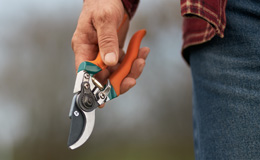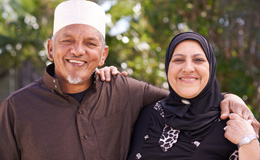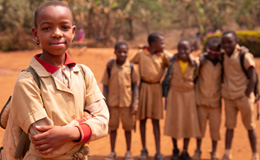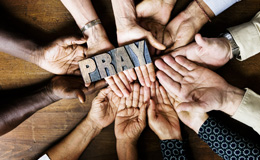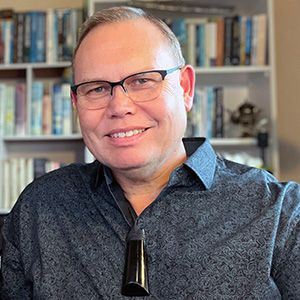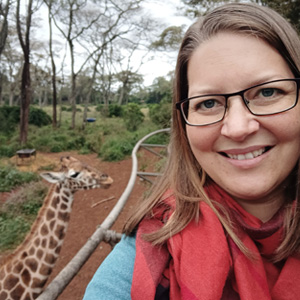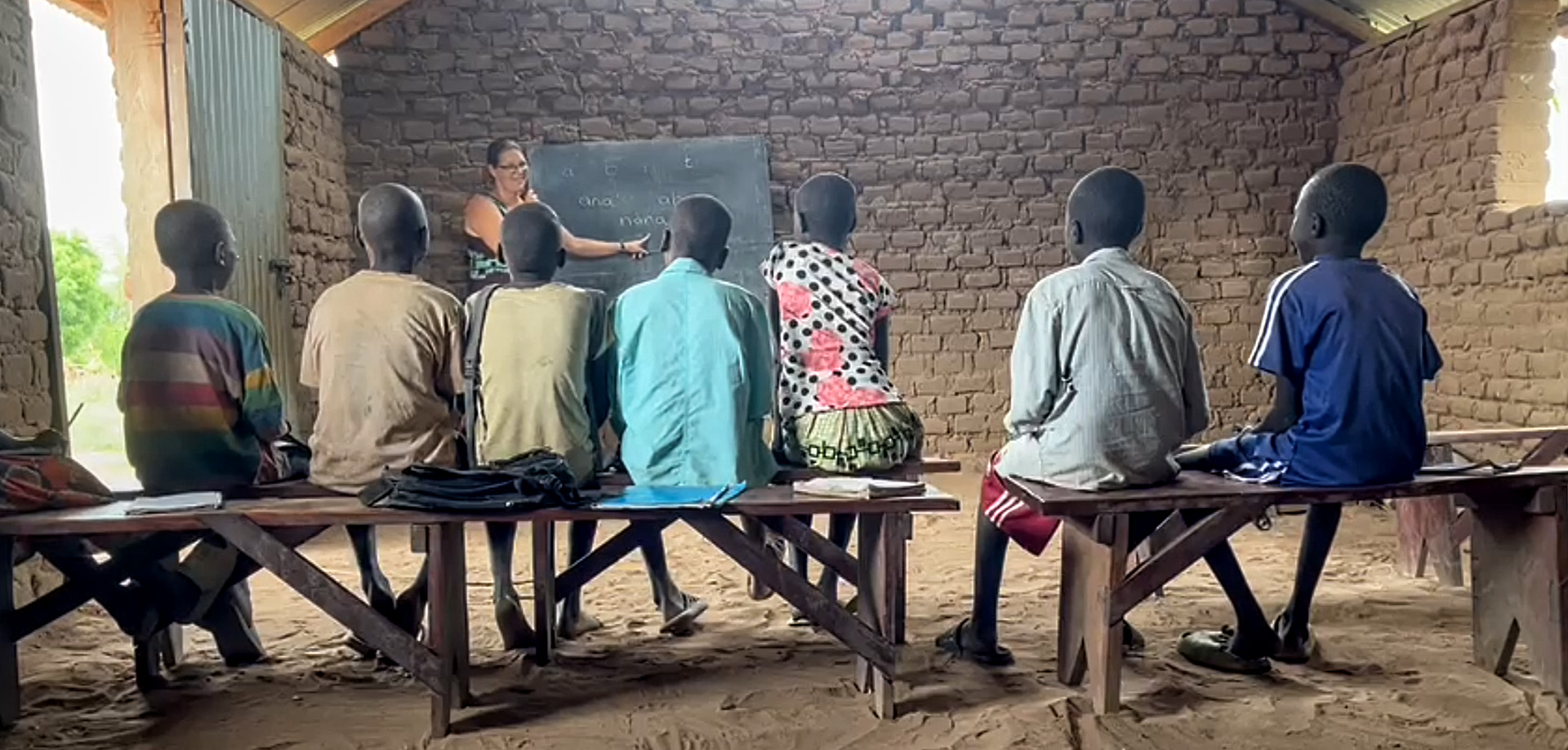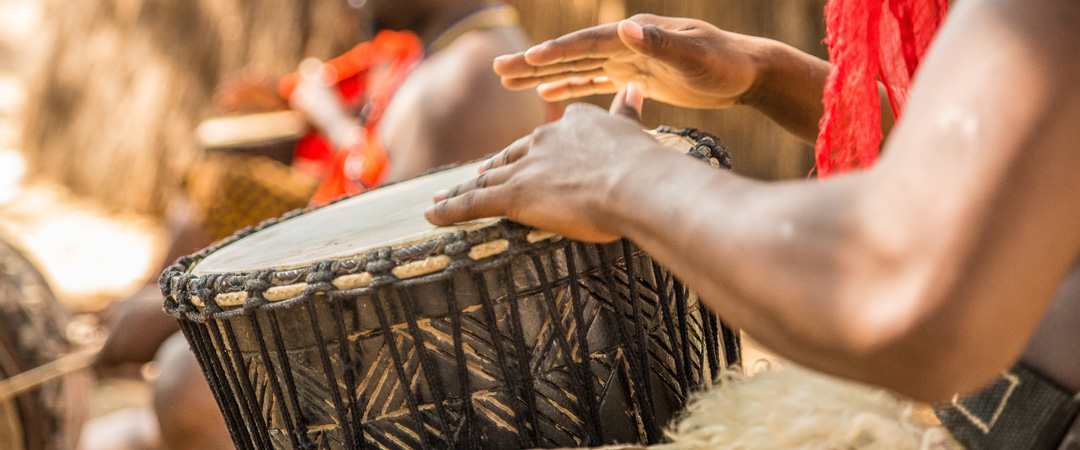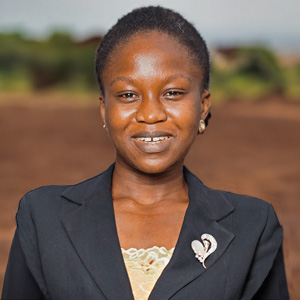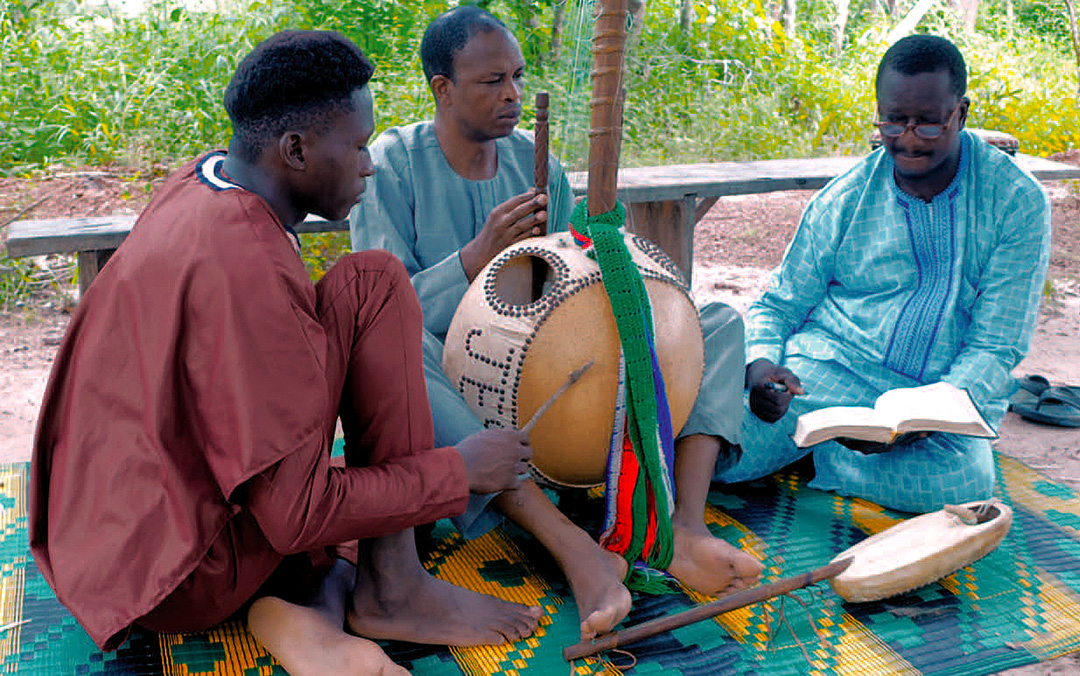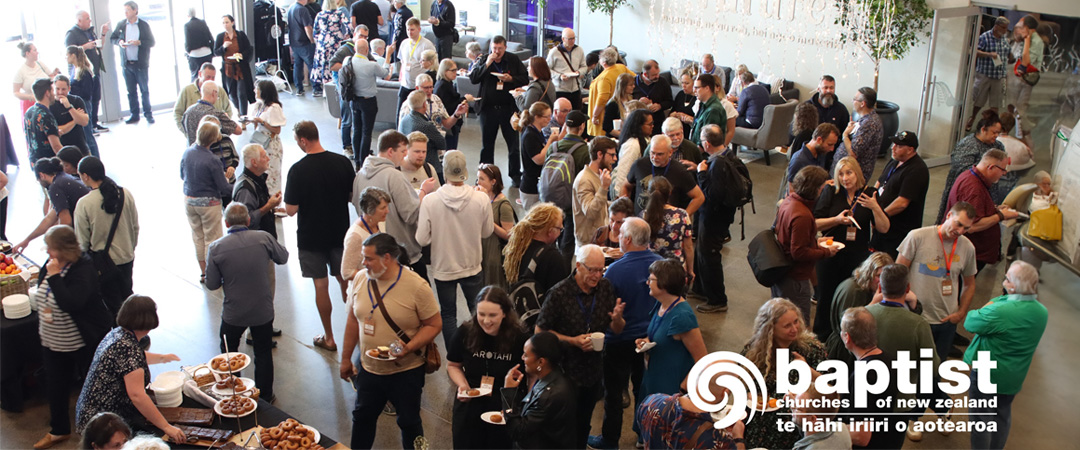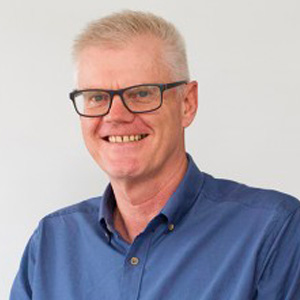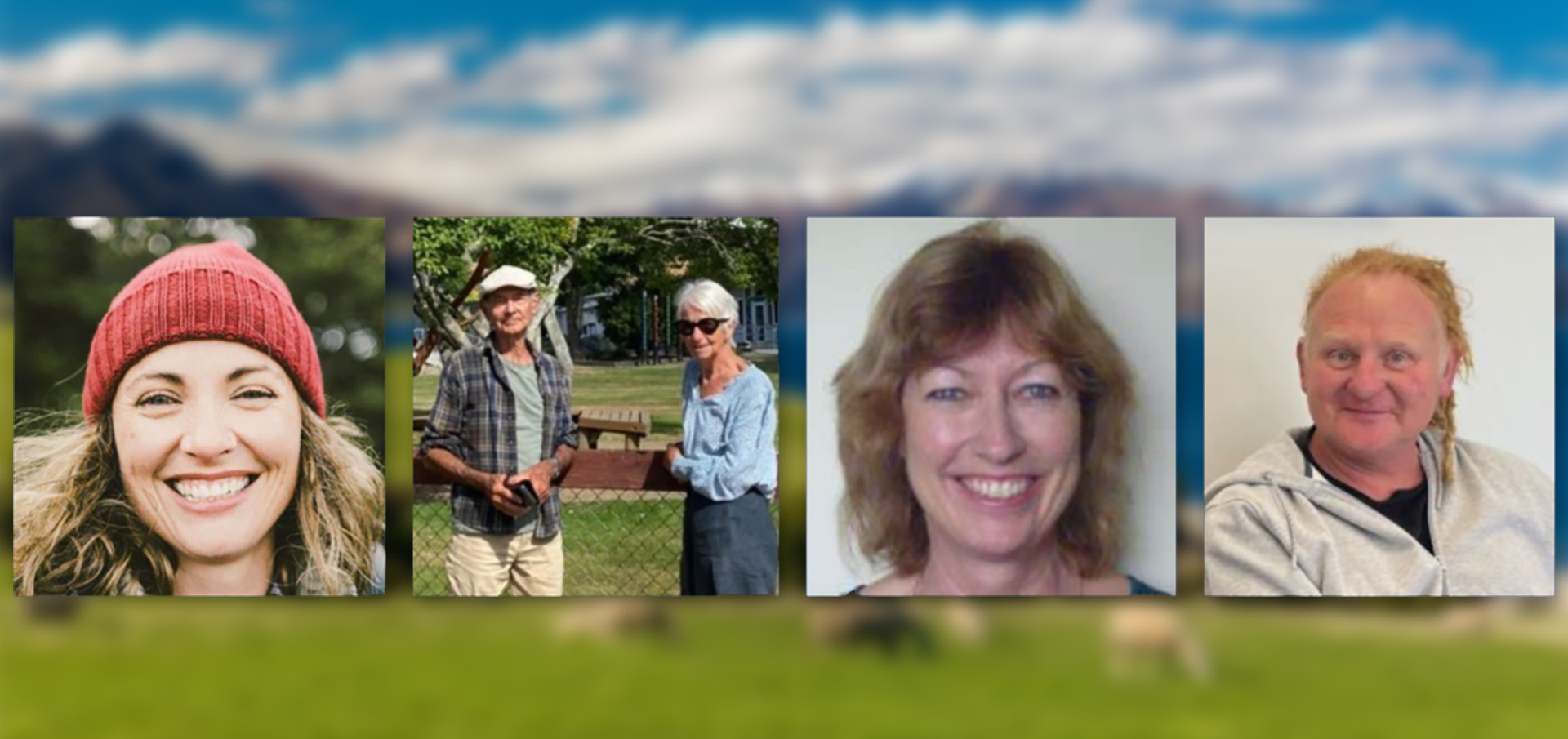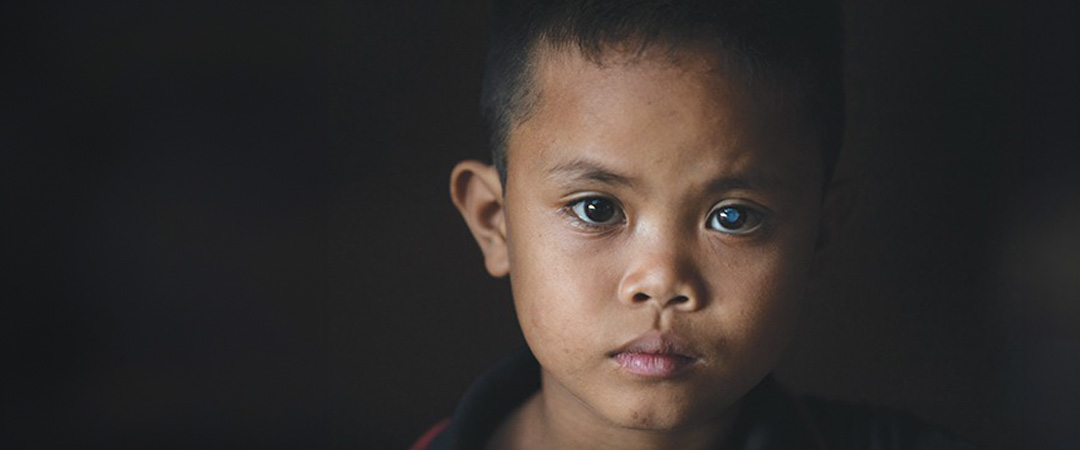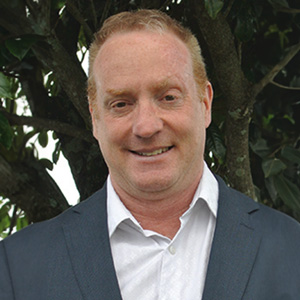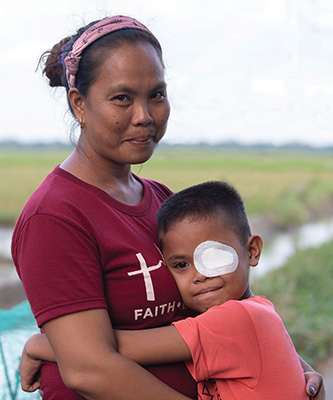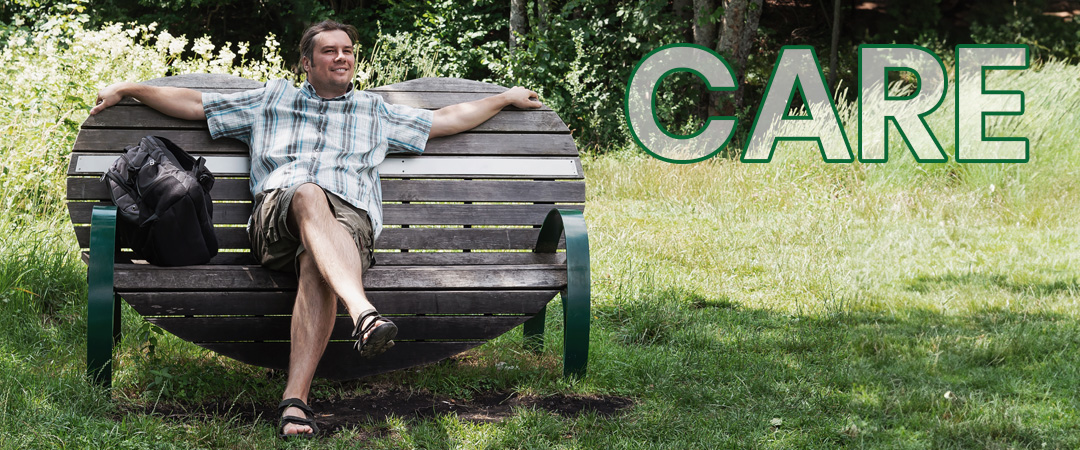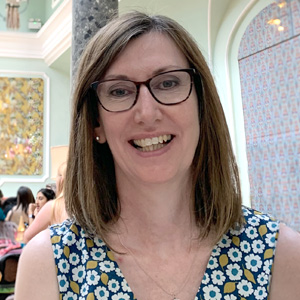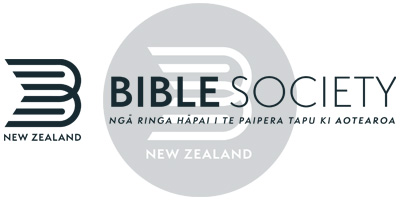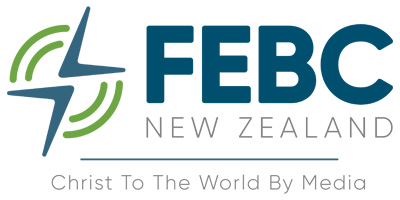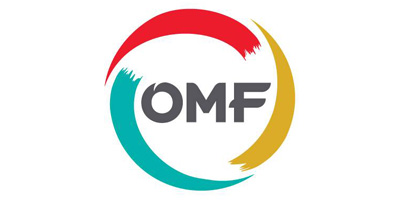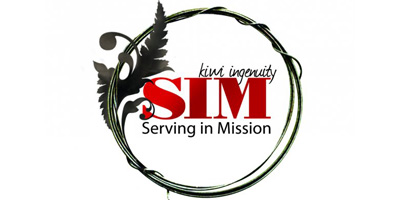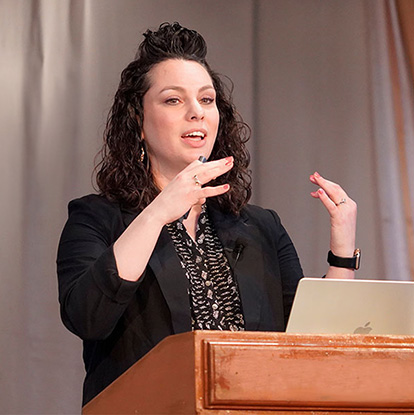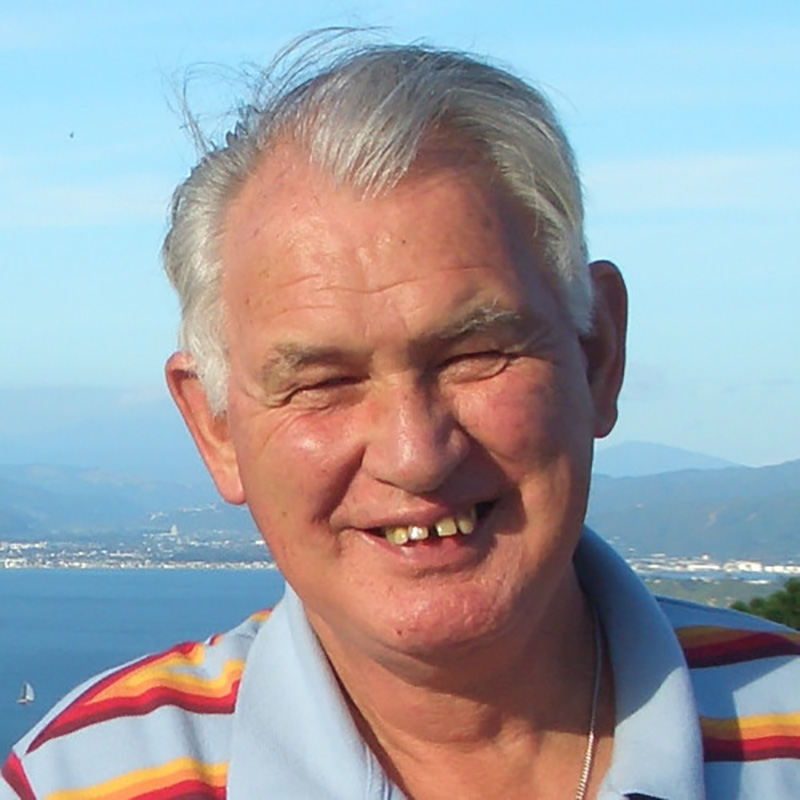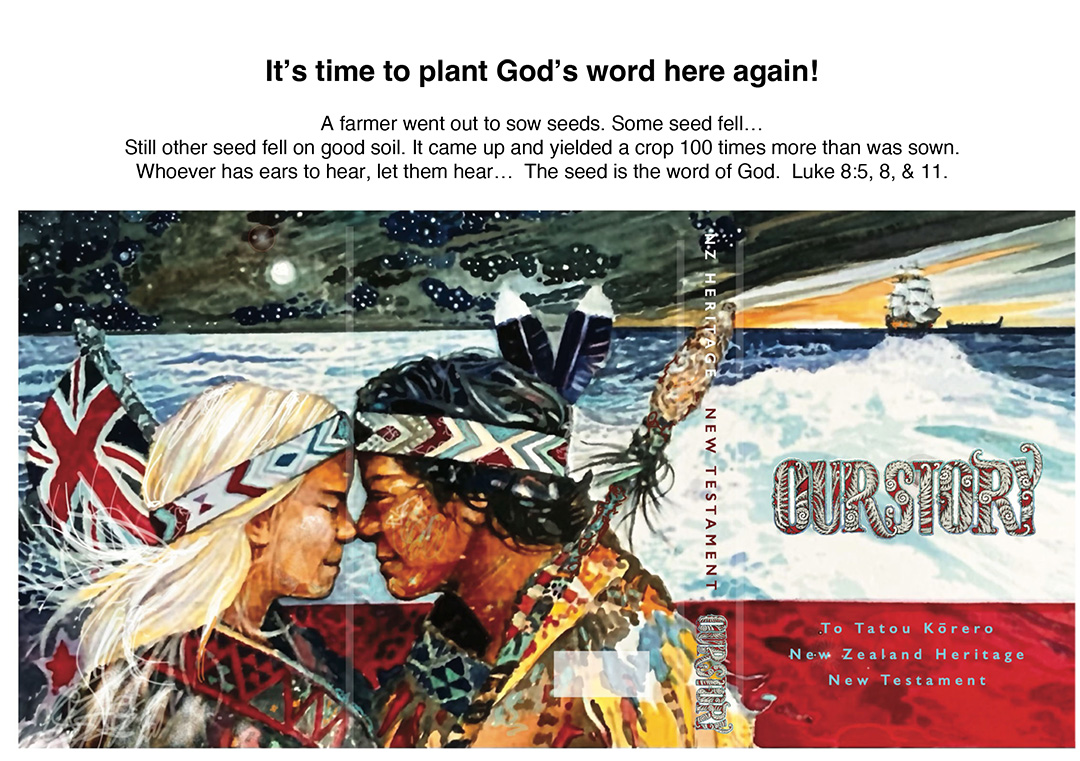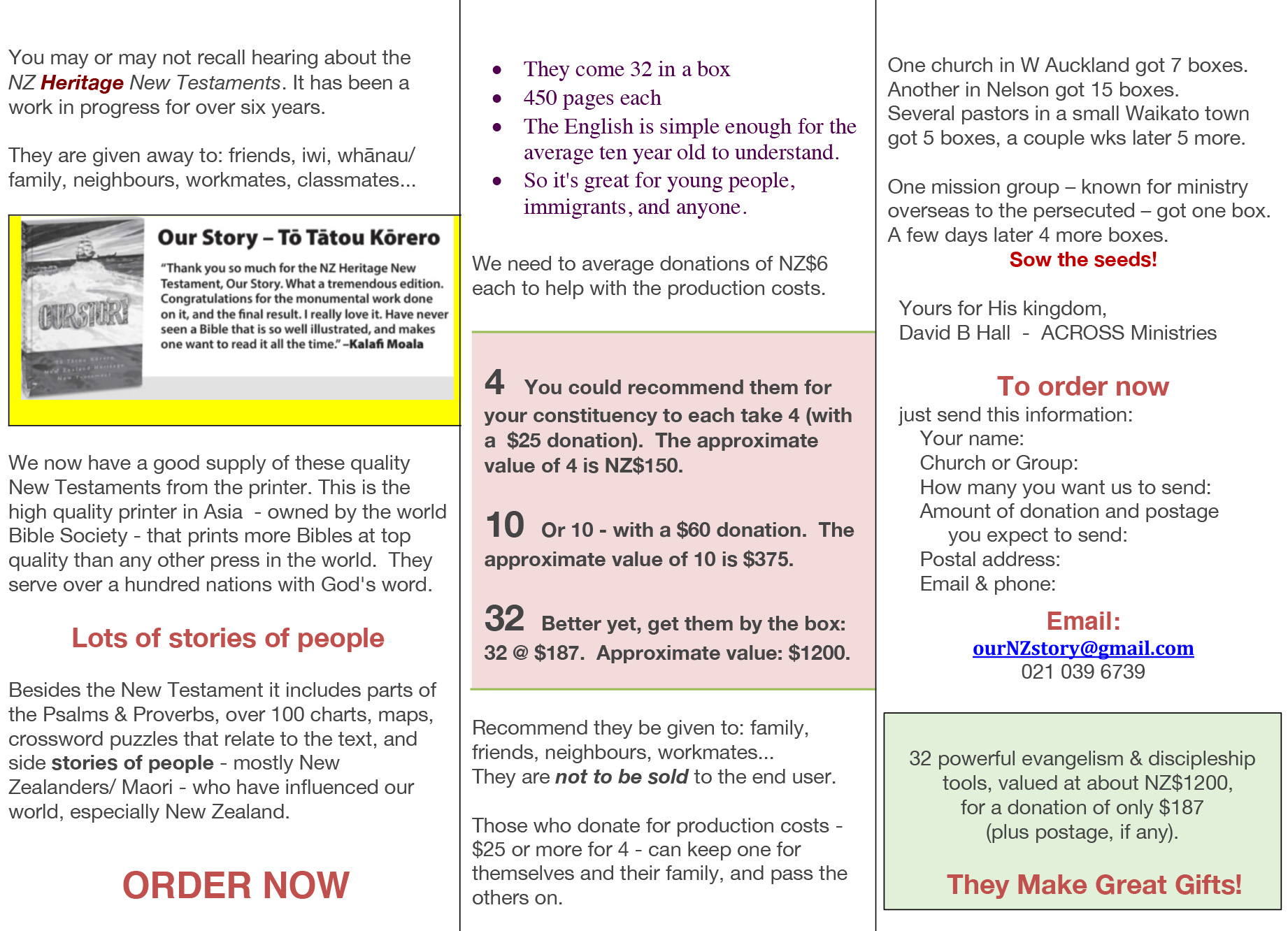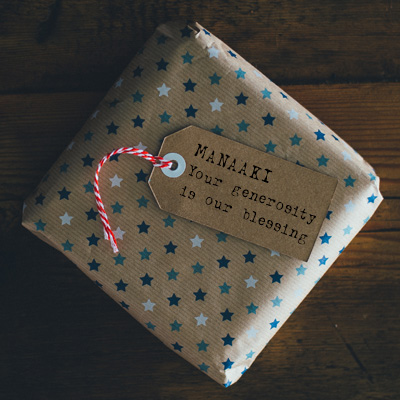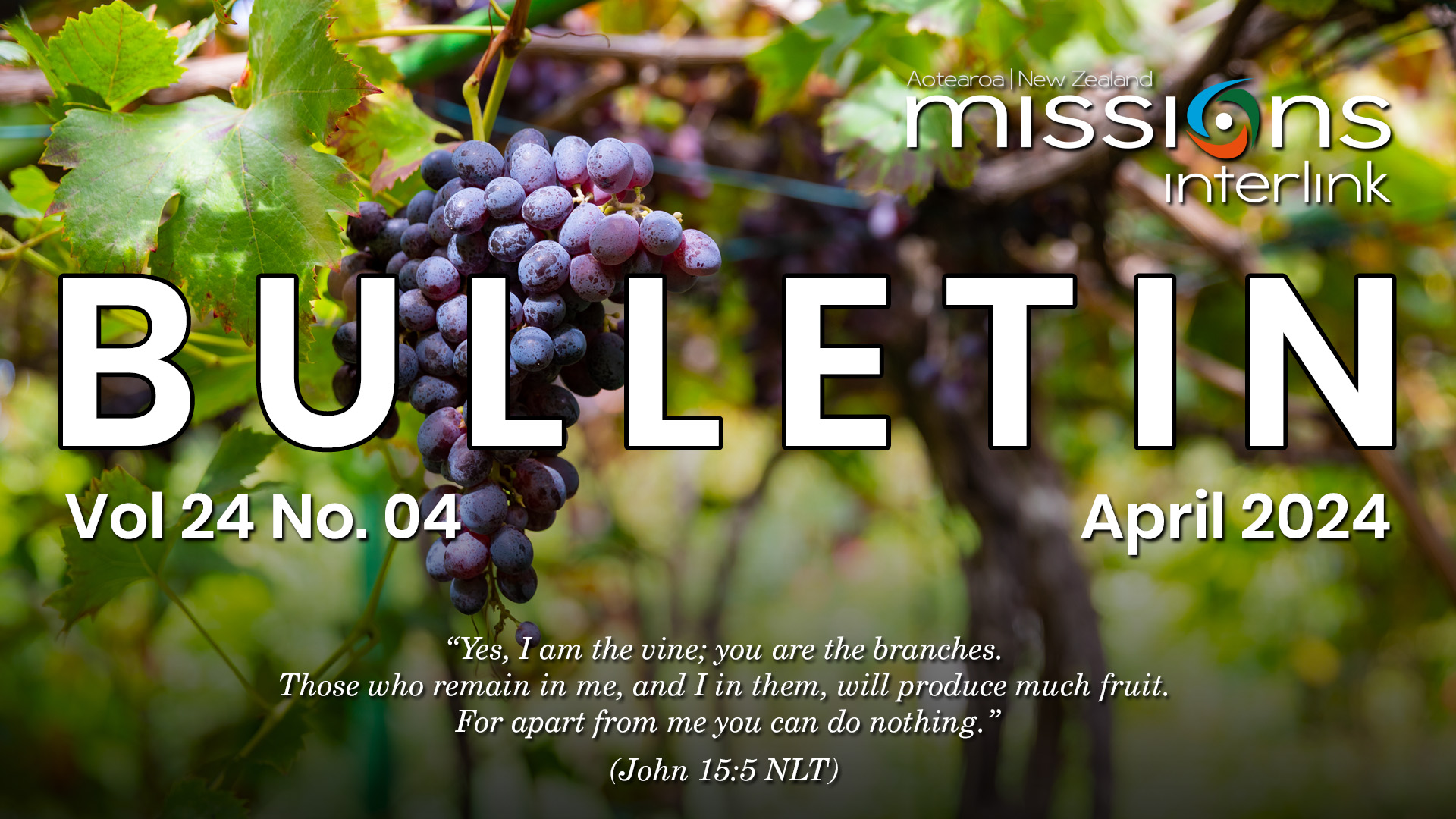
QUICK MENU
EDITORIAL
- Damaging Detachment
EQUIP
- Understanding Cousins
GO
- A Door Wide Open
- Indigenous Art
- Baptists On Mission
- A Bright Future
CARE
- Care For Thyself?
PRAY
- BIble Society, FEBC, MINZ, OMF, SIM, WEC.
SPOTS
- 2024 MI EVENT
- Latest News. Events & Opportunities
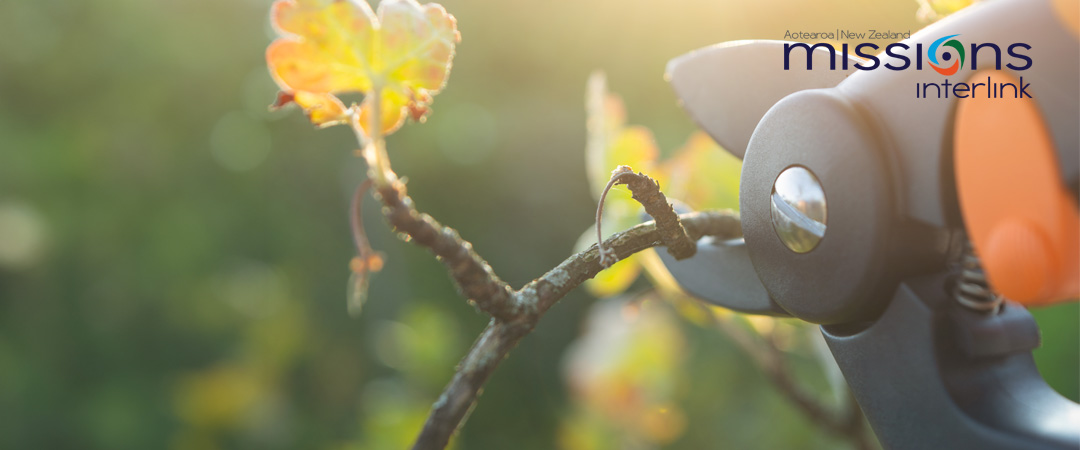
EDITORIAL
DAMAGING DETACHMENT
By Dr Jay Matenga
Jay is the Executive Officer of Missions Interlink and Executive Director of the World Evangelical Alliance’s Mission Commission. Jay writes and speaks on missions related subjects globally. His blogs, articles, and other public contributions are made available for free on jaymatenga.com
Galatians is widely accepted as Paul’s first epistle. It emerged in response to a radical disruption of the Jewish faith following the resurrection of Jesus. Almost 2,000 years on, we can too easily gloss over the shocking nature of this shift, which became a schism, and then an entirely independent religion with unbroken spiritual roots in the history of Israel and Judaism. I love Paul’s letter to the Galatians because it sets out the basis for what we now understand to be ‘contextualisation’, or what I prefer to call the indigenisation of the faith, where essential meaning is retained while outward forms differ according to the local social environment. Here, Paul effectively applies what was discussed by the Apostles in Acts 15.
It is too easy for missionaries to conflate their social and moral assumptions and theological dogmas—such as circumcision was to the Jews—as gospel imperatives and seek to impose them upon a society different from that of their upbringing. The gospel speaks uniquely from within every context. It needs to be incarnated into new contexts like seeds sown into different environments, which shape the resulting plants in different ways. Missions thinking over the past generation has made much of an incarnational theology, referring to God becoming flesh in Jesus as a model of missions. But we neglect to understand that God’s incarnation was very specifically embodied with the genetics and cosmovision of a first century Jew. Humans cannot just transfer from their home culture to another and expect to become indigenous to the culture. Ever.
It is not possible for imported ministries, models, methods, or people to incarnate. They lack the genetic heritage. They can adapt, acculturate, identify, and sacrificially serve but they cannot incarnate. This is very important for missionaries and other outsiders to grasp so that the indigenous church can flourish in their contexts. While ministries external to a context can support the wellbeing of local expressions of our faith, we must allow room for the gospel to put down its roots, absorb local nutrients, and grow up from within the context for it to thrive. That is not to say the gospel shouldn’t be a corrective to that culture, but it does so from within not without. Outsiders do not get to determine what is or is not theologically correct within another cultural context.
There are limits of course. To be of the same species, authentic faith in Christ must retain the core DNA of the biblical narrative and the historic Church and share crucial genetic markers of belief with the rest of the global Church. But myriad cultivars can emerge depending on the context in which the seed of gospel faith develops. This is to our advantage as members of the Kingdom of God. The rich diversity expands our understanding of who God is and together we mature each other by sharing our lived experiences as part of one big global family (cf. Ephesians 4:13-14).
After Galatians, Paul continues to develop his theology of what the gospel writers called the Kingdom of Heaven or the Kingdom of God by way of his preferred term, New Creation. But even in the Galatians sample above we can see that the concept emerged early in his ministry—in many ways marking Christ’s resurrection as a reboot of Genesis. It is easy for individualists to interpret New Creation as a personal transformation. That is an error to which 2 Corinthians 5:17 is also prone. But there is much more of a cosmic and communal intention to Paul’s thinking about New Creation—hence my parenthesis of (a) in the text above. New Creation is not solely a new state for each believer, it is a now/not-yet renewal of all things—a (process of) transformation of the cosmos from one state to another. How that transformation manifests with the “new people of God” in any given context is largely dependent on the context.
As we seek God concerning problems and questions that arise within our own context, so the Holy Spirit reveals themes in Scripture that address those issues in ways that are deeply meaningful for that time and place. For example, there is nothing more meaningful in times of crisis than to realise afresh in the promise of the gospel that God is with us and Jesus is in us, the hope of glory (Colossians 1:27). Emmanuel. “And, lo, I will be with you alway, even unto the end of the world. Amen.” (Matthew 28:20 KJV). But what Jesus’ intimate presence looks like is manifest in culturally meaningful forms. In times of great crisis and trauma we reach out with what we know, and God meets us there, bringing comfort and reassurance. The Spirit reminds us that this is not the end—there is a better world coming in power and glory. That is not an empty promise or mere platitude. It is also not to excuse injustice or ignore abuse. It is reassurance that there is a coming judgement and the Lord who is just will make all things right.
In the midst of ignorance and criticism from outside opinions heaped on top of great cultural pain, Rev. Dr. Munther Isaac preached an unapologetic 2023 Christmas sermon from Bethlehem titled, “Christ In The Rubble”. It was a lament powerfully illustrated by a baby wrapped in a Palestinian keffiyeh (black and white head scarf) placed in the rubble of buildings like Jesus in a manger. The art installation was shocking. It was meant to be shocking. It was simultaneously designed to express both the lament and the hope of Palestinian Christians as well as being a clarion call to those of us in more peaceful contexts as we celebrated the baby Jesus meek and mild, safe and sound in the manager hay protected by the watchful gaze of the most powerful angels. Where is the Jesus of Matthew 28:20 more likely to be? In our sanitized fairy tale recall or in the midst of believers meeting in a war-torn land losing fathers and mothers, sisters and brothers, friends, and lovers?
In the wintertime I often wear a Palestinian keffiyeh. It reminds me of friends in the Middle East and keeps me warm from the wind chill at home. It is a piece of attire that is common throughout the Arab world with different colours representing different tribes, worn in different ways. It is a very functional square of chequered cloth offering protection from the blistering sun and a shield from the sand blasted by the desert winds among many other uses. It has long and deep cultural meaning for Arab people. Not unlike Māori kākahu cloaks now only worn ceremoniously or pounamu (nephrite jade) artefacts used now as fashion accessories but previously as multi-functional tools, utensils, and items for trade. My father gifted me a tūī themed kākahu for formal use and I wear a dark green pounamu hei toki (jade adze pendant) that otherwise could be sharpened and used for carving. One of the meanings of the hei toki as a gift is recognition that the recipient has acquired some skill at crafting relationships. But it could also be sharpened and used as a lethal weapon—the complete opposite of relationship building! Artefacts that endure over time come to represent the cultures from which they emerge. They are indigenous to that culture. Most people who proudly wear a pounamu accessory associate its meaning with Māori culture… and its struggle.
It is against this appreciation of theology from within cultural contexts that I was aggrieved by Mike Cosper of Christianity Today’s treatment of the Palestinian Christian response to the conflict incited by Hamas on 7 October 2023. In his 19 February 2024 essay, Mike flattened centuries of history and meaning surrounding the keffiyeh to associate it solely as a symbol of terrorism. The Jewish Jesus swaddled in a Palestinian keffiyeh offended him. He intimated that the Bethlehem church was sending an antisemitic message. This interpretation had little appreciation for Jesus as Emmanuel or that His death and resurrection makes Him available as a Messiah for all people. That is why male followers of Jesus no longer need to get circumcised. Hallelujah! An indigenous gospel places Jesus in the rubble shrouded in a cultural artefact because He is with and in believers suffering in Palestine just as he can be wrapped in a Tallit (prayer shawl) in Israel or a kākahu cloak in Aotearoa New Zealand—symbols of the people. If it were the flag of a nation, that would be a different story. Jesus and the state are never compatible.
By situating his commentary about Rev. Dr. Isaac’s call for justice and the nativity installation within an exposé of Muslim ideologies, Mike Cosper implicated our Palestinian brothers and sisters with terrorism. In spite of a brief, “not everyone who wears a keffiyeh (or wraps the baby Jesus in one) does so with [terrorist] intent”, the strongly implied association by Christianity Today was a travesty. It is too easy for outsiders, especially those who live safely behind the borders of first world powers, to criticise the actions of those who are suffocating under a foreign regime. Followers of Christ should know better. We need to BE better. Our primary solidarity should be with fellow believers who are suffering, seeking to understand their pain and appreciate their lament, not clinically undermine them from a detached distance with woeful cultural intelligence.
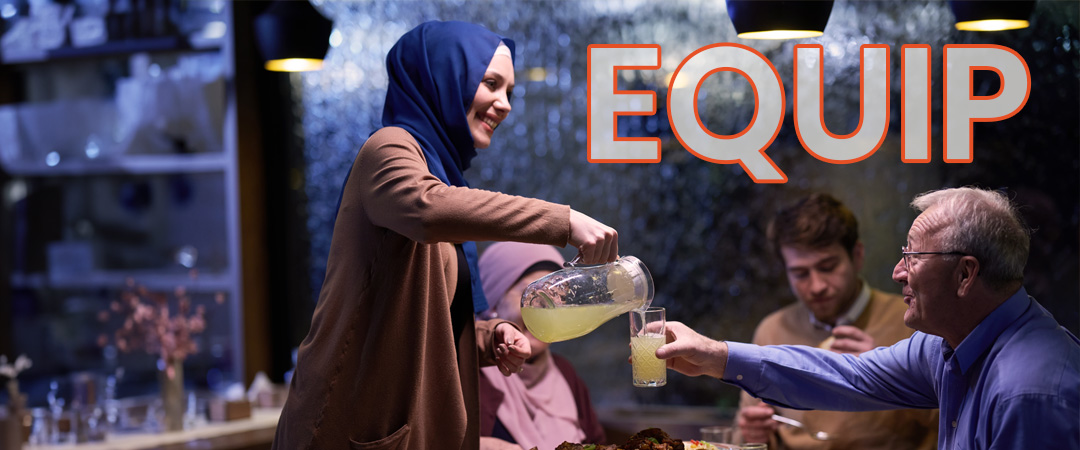
UNDERSTANDING COUSINS
RAMADAN, FASTING, & SPIRITUAL DISCIPLINES
By Stephen T
Stephen grew up in East Africa and returned to serve there as a cross cultural worker among the peoples of the Horn of Africa. He lives with his wife in Auckland and they have three grown children, one son-in-law and two grandchildren. Stephen has a business which enables him to interact with many of the ethnic people in his neighbourhood.
This has had a huge effect on our neighbourhood. Every Friday around 1pm, for an hour or more, all the streets for several blocks in our neighbourhood are lined with cars. Asian and African looking men are seen dressed in clean and often white Middle Eastern clothing. At this time of each year several streets around the mosque are lined with cars on most nights and the same men are seen coming in and out of the mosque. It is Ramadan, a special time of community and spiritual renewal.
What does Ramadan mean to our cousins and how should their disciplined spirituality affect us?
Looking on from the outside our temptation is to criticise our cousins. We see them fasting and sometimes sleeping during the daytime and feasting at night time. We ask is this really a fast or is it a feast? Our cousins who do not usually pray become more diligent in their praying and fasting—although some still sneak food when out of sight from their families. The iftar the fast-breaking events after sundown attract huge numbers, becoming quite the social occasion. In the past, in the organization I worked for, when someone professed faith in Christ their sincerity was proven when they did not participate in the Ramadan fast. It was understood that our cousins primarily fast for forgiveness of sins so it was no longer necessary for followers of Isa (Jesus).
Phil Parshall in his book, Inside The Community: Understanding Muslims Through Their Traditions, comments that there are many “colorful and descriptive comments about the fast in the Hadiths.”[2] For example, “…Abu Huraira: Allah’s Apostle said, “When the month of Ramadan comes, the gates of Paradise are opened and the gates of (Hell) are closed, and the devils are chained”[3] Parshall goes on to comment how living in the world of our cousins he found the devils were anything but bound! Fasting makes people irritable and easily angered. At the time, the war between Iraq and Iran continued and activities which provoke terror continued.
The Ramadan fast or sawm is the fourth pillar of Islamic practice. All adult Muslims are expected to abstain from all food, drink and conjugal relations from sunrise to sunset for one lunar calendar month. Before fasting, the person has to declare his or her intention to fast before dawn of that day. Travellers, sick people, and menstruating women do not have to fast but can decide to make it up later. Fasting is seen as important for building one’s spiritual character.[4] The Muslim calendar is based on a lunar year and Ramadan is in the ninth month of their year. This means the fast moves forward every year about 11 days and, depending on the season, the amount of time they have to fast each day varies. It is dependant on how long the daylight hours are in the country you are living in. I am sure whoever invented the fast was not thinking about those near either the North or South Pole in places where in some seasons sometimes the sun hardly sets!
Books written by our cousins that intend to invite us to join their faith expound the values of the Ramadan fast. For example the book Islam in Focus mentions 12 things that explain the spiritual meaning of the Islamic fast.[5]
- Firstly is sincere love. When a person fasts he does it out of a deep love for God.
I believe this is related to taqwa or reverent fear and God consciousness. Our cousins claim to fast to deepen their relationship and awareness of God.[6] - A sense of hope.
Our cousins believe that fasting will please God and he will forgive and bless in the future. - Fasting out of a sense of devotion or dedication to God.
The devotee is meant to be doing it for God and God alone. - A person who fasts should not do it to be seen by his society (cf. Matthew 6) but to please God and because they are sincere Muslims.
They are meant to continue normal activities. - It enables them to experience a sense of deprivation and sympathy for the needy in society.
To identify with those who, because of circumstances and poverty, go hungry. It is an expression of unselfishness and genuine sympathy. - A person learns moderation and willpower.
One develops an ability to control one’s desires. It develops character and personality. - Fasting helps to clear the mind and lose weight due to eating less makes one more agile.
There are physical and mental benefits. - There are economic benefits of fasting as one spends less money on food.
Something as outsiders watching our cousins fasting (and feasting) might question! - It develops the art of mature adaptability.
The routines of normal life are changed during the month of fasting and one learns ways to overcome some of the hardships of life. - It is helpful for the stomach to have a break from overeating and there is an element of discipline as one learns to control what one eats. This also benefits the soul.
Again, difficult to argue in light of the practice of iftar. - There is a sense of brotherhood and sisterhood as one fasts as part of a community which is participating in the fast.
Rich and poor both fast together. It strengthens the Muslim community. Enhanced by the practice of iftar.
It is a godly prescription for “self-assurance and self control.. . for victory and peace.” - This seems to be about the sense one has that as one participates in the fast one is in a right relationship with God. This is because of participation in this important pillar of the faith: obedience to Allah’s commands.[7]
As we seek to reach out to our cousins how do we respond to Ramadan?
In many ways the spiritual aspects of the fast are a challenge to us. We are challenged to develop deeper spirituality ourselves. Some workers in our cousins’ lands have participated with our cousins in their fast and this can result in closer interactions and relationship building. As a cross-cultural worker among our cousins in East Africa I chose to stay in the area during Ramadan and not leave as some workers were doing. I also fasted with them the first week several times. A colleague with me often fasted the whole of Ramadan. I remember having some good times with a young man who choose to break his fast with us. A few years later I was back in the area and sitting under a tree watching them bury another young man we had been associated with. An elder sitting with me said “You and Daud (the other worker who participated in Ramadan) became one with us when you lived among us.”
Other older cross cultural workers have suggested that our cousins will misunderstand us if we participate.[8] Parshall suggested that we need to be able to explain our motivation as a means of identification with our cousins while also understanding the biblical teaching and not be trapped in some form of legalism. As Christians we should make the month an opportunity to spend concentrated times in seeking God in new ways and our cousins may be impressed as we share how God is real to us.[9]
During the last ten days of Ramadan there is a particular night (even our cousins do not know exactly which night it is). The night is called “the night of power” or “Laylatul Qadr”. Sunnis[10] believe it should be on an uneven number and this year 27th day which would make it the night of 6 April in 2024. Our cousins believe it to be the day Muhammad received the Qur’an or significant parts of it. Spending this night saying special prayers and in devotion is believed to result in extra blessings and forgiveness of sins. It is said to be worth 1000 times a normal night. Some receive visions and even visions of Jesus, which have led to conversions. For a number of years in Auckland we have held a special prayer meeting this night and seen a number of amazing answers to prayer including the conversion of the son of a Saudi mufti, an Islamic legal expert.[11]
Ramadan in 2024 ends on 8 April, but think and plan about how next year you can engage more with our cousins over this special spiritual time in their calendar. Many of us have them as neighbours or they are in our neighbourhoods. At least grab the next 30 Days prayer guide and take time to pray that God, whom they seek so earnestly at this time, will reveal Jesus to them.
Sources
Abdalati, H. Islam in Focus, American Trust Publications, Indianapolis, 1975.
Cooper, A. Ishmael my Brother, MARC Europe, UK, 1985.
Joktan, A. A Night of Power, Asia Pacific Discipleship Trust, New Zealand, 2021.
Marsh, C. Share your Faith with a Muslim, Moody Press, Chicago, 1977.
Parshall, P. Inside the Community, Baker Books, Michigan, 1994.
What people think about Ramadan (graphic): Available from Facebook (accessed 1 April 2024).
Footnotes
- Because of my background in missions I especially choose to live in this suburb.
- The Hadiths are a body of literature containing comments and acts purported to be from Muhammad and of some authority in Islamic practice and belief.
- Parshall, P. Inside the Community, Baker Books, 1994, 75 (quoting from Al-Bukhari collection of hadiths, 4:320:54.10.497).
- A Cooper, Ishmael my Brother, MARC Europe, 1985, 45.
- H Abdalati, Islam in Focus, American Trust Publications, 1975, 87.
- Also based on a picture diagram available from Facebook (see Sources link).
- From the Facebook picture diagram (see Sources link).
- Marsh, C. Share your Faith with a Muslim, Moody Press, 1977, 25.
- Parshall, 82.
- Muslims divide into two main groups Sunni and Shia. The Sunnis are the largest.
- Joktan, A. A Night of Power, Asia Pacific Discipleship Trust, 2021 (is an autobiography of one such testimony in New Zealand).
BY MARLENE VAN TONDER
Sent from Aotearoa New Zealand, Marlene has been serving with Africa Inland Mission in South Sudan for 10 years. She did two terms in teams with the Lopit unreached people but more recently moved to Torit where she led a 1-year training team that finished last July.
Just a small glimpse into the tiny mud walled classroom in the middle of an average neighbourhood in Torit, South Sudan. So many children who have had little or no opportunity to attend school. So many who have been damaged by trauma: War, famine, drunkenness and a culture of child marriage. It’s a rough environment to wake up to each day. But they do it. Their resilience is astounding, and I am continually humbled by it.
South Sudan has one of the lowest literacy rates in the world. Thousands of children do not attend school at all, of those who do, most will not finish high school, and many won’t even get a basic primary school education. It is a country with its doors wide open. CRE or Christian Religious Education is a part of the national curriculum. Sharing the gospel at school is welcomed! If only there were enough dedicated teachers, or graduates willing to teach, available.
I have had the privilege over the past nearly ten years to teach many children and adults how to read and write. This is something so basic we take it for granted, yet it’s something essential to an independent faith to have the ability to read the Bible for ourselves. There are a multitude of opportunities to work in education on the mission field, and in South Sudan in particular.
Teachers are always required at all levels. With AIM I work in primary schools, teaching literacy and other subjects as needed. I have also trained teachers, worked in literacy promotion and development and done a brief stint with adult literacy. Currently I sit on the board of a mission school in Juba, Juba Christian Academy, which provides schooling for missionary families based there, particularly MAF.
One of the girls in my neighbourhood, when I first moved to the Lopit mountains, had stopped attending school. I was privileged to teach her to read and write and she returned to complete primary school. She is currently attending high school in Torit and we still meet for weekly Bible studies where she improves her reading comprehension and the Lord deepens her knowledge of Him. In a country where girls seldom complete primary school, due to home demands or early marriage, it is such a blessing to be able to make a difference in at least one life.
Others within our AIM South Sudan Unit serve within education as well. Crystal (pictured above in the header image) teaches public health at the Torit Health Science Institute. Jacob, the Laarim team leader, has worked with literacy education to both children and adults. Another Laarim Team member, Tessa, has taught maths and recently started teaching literacy to the lower classes at their local primary school. Andrea in the Lopit Ministry Team hopes to pick up with literacy teaching at her local school now that she has been able to return to her home in the mountains. And there are so many more opportunities to reach the lost for Christ through education.
In reality anyone can teach here. If you have finished high school you qualify. All that is required is a willing heart and a whole lot of flexibility and resilience. Most days are chaotic. You will often find yourself alone, the only teacher in attendance, with children from all year levels hanging in the door and windows of the class you teach, desperate for the love and knowledge being shared. Frustration is a guarantee, discouragement also, but so is joy and deep satisfaction. The day that damaged little girl finally smiles, or the most stubborn of boys finally sits for the whole lesson without hitting another child. The child running up to greet you in the market, or smiling knowingly at you as they enter church, those days are the little pieces of gold sprinkled about. The little glimpses of God’s light breaking through the deep darkness. Those are the days that make it all worth it.
BY KATE AZUMAH
Kate is the managing editor for AfriGO Magazine. She was first introduced to the practice of praying for countries and to the need for cross-cultural missions at a Christian camp in Ghana where she loved to share the gospel. For fifteen years Kate has served mobilizing young Africans to pray for the nations and to go on missions trips. To date, she has facilitated and led trips across 30 countries in Africa. The AfriGO magazine is a megaphone that elevates the voices of African missions through sharing the stories, resources and opportunities needed to aid and thrust more Africans into missions. This article is curated from AfriGO’s Volume 9, Issue 1 edtion, available online here.
A crowd has gathered in a small Mandinka community in West Africa. The village griot (West African storyteller, oral historian, and musician) is narrating a story as Oluwaseyi serenades along on his kora, a local 21-string harp. On a mounted screen, images drawn by a local artist depict the griot’s recital. The audience, an African tribal group with very little gospel witness, is engrossed in the Bible story of the Good Samaritan. The griot is speaking their language, the characters on the screen look like their own neighbours, and the kora’s tunes have been familiar to their ears since childhoods. That’s the power of indigenous art for the Gospel.
Oluwaseyi (Seyi) David Ige is the Director of Declare Global Outreach Mission, a Nigeria-based ministry with the vision to produce 1000 indigenous worship songs, 300 indigenous music videos, and 100 evangelistic films for unreached people groups in the Sahel region. His interest in the arts started at a young age with his love for music, and accompanying his evangelist father on church-planting trips to remote villages lit in him the spark for missions. It was no surprise then, when he was appointed outreach coordinator for the Nigerian Christian Corpers’ Fellowship while doing his National Youth Service in Nigeria’s Delta State. An attempt to organize an outreach to one of the islands backfired, however, when the community mistook his team for spies and threatened to kill them. As they fled by boat, the Lord told Seyi, “I have many such communities in this area. When you finish with your service, I want you to come back and work here.” Seyi resisted the call and had no peace until he gave in and returned to serve as a missionary.
FASCINATION & QUESTIONS
Seyi had learned to play the guitar, keyboard, and drums before his missionary posting to Delta State. Whenever a local community held a festival, he would go and watch. “I’d see people singing local songs, playing local drums, and doing the local dances. It captivated me so much and I loved it, but a nagging question lingered in my mind, ‘Why should the Devil have the best of our local instruments and dances?’”
The question bothered Seyi, until he came across a 2014 issue of the Mission Frontiers (https://bit.ly/3wQJyeq) that focused on ethnodoxology. “It was then I caught the connection between the arts and missions. Eureka! This is my passion; this is what I want to do!” he recounts. Right away, Seyi formed a church group that employed local instruments and dance in their music.
“Whenever we went on outreaches to show the Jesus Film, we started with local music and dancing. Everyone got excited; and they came, both the young and old. They had never seen Christians doing their local dances before. We had many breakthroughs using this method.” Seyi stayed in the area for eight years and planted churches among the Itsekiris, Nembes, and Ilajes. He eventually moved to The Gambia to work with Youth With A Mission (YWAM).
Seyi playing the kora with friends
A NEW ASSIGNMENT
While in The Gambia, Seyi discovered the kora, and learned to play it. He did the same with the balafon, a type of xylophone; and the ngoni, similar to a guitar. He attended the YWAM School of Frontier Media (Create International) in Thailand, equipping himself further in how to produce music, write scripts, and make videos. He also went to Dallas International University to study World Art. Seyi reveals, “While on a retreat in Thailand, the Lord said to me, ‘As my worship is in heaven, so I want it done here on earth, and I want you to catalyze it.’ I reasoned that worship in heaven is done in different languages, with different instruments, and with understanding, so the Lord wanted me to produce indigenous music to help indigenous people to worship him.”
THE PROCESS
Seyi explains, “Art is a special kind of communication. Just as we learn a language in order to understand it, we must do the same with art. Music is not a universal language. A form of music may be universally accepted, but it is defined locally. For example, in western music, playing a minor scale communicates sadness, but for others, it communicates joy. It’s the same with dance.”
“Before producing anything for a people group, we first go to the community and research their artistic genre—their music, dance, drama, oral arts, etc. We listen to their stories and proverbs, inquire about their meanings, and then search for Bible stories or concepts that communicate a similar idea. Critical contextualization is crucial, because we are careful not to adopt forms or expressions that conflict with the Gospel. Our findings inform the lyrics and type of music we write for the songs. We incorporate elements that resonate with the people and preserve their cultural heritage. In one of our Songhai songs about Mary and Lazarus, the youth wanted to add a rap. We fused that with the traditional elements, and it’s now one of our most-watched videos.”
“There’s a technical side too. We hire professional audio engineers to mix and master our music, and we shoot our videos in 4K. This ensures a quality production that can be broadcast anywhere on radio and television. We give our work back to the community at no cost to them.”
IT WORKS
In one country where conversion is punishable by law, a missionary played one of Declare Global’s recorded songs about Jesus to a group of university students. The students said, “This is our tribe. We like this song and the story in it.” The missionary invited them to listen to more songs, and through that, started a Discovery Bible Study. After a few months, four students became followers of Jesus and got baptized.
“We go to communities where the Gospel is resisted; yet, they welcome us when they hear their local songs and see their own people acting in our films. People reject the Gospel not because they don’t want it, but because of the mediums used to communicate it. When the Gospel wears a local dress, it travels faster and penetrates deeper,” Seyi explains.
ARTISTS AS MISSIONARIES
For Christian artists who don’t see their role in missions, Seyi offers this encouragement, “Your art is a great tool in your hand. Don’t say it’s an ordinary guitar or paintbrush. Go for a short-term mission. Talk to artists in that context and value their art. Learn how to play an indigenous instrument in your locality. Volunteer with organizations that are producing local content for missions.”
He cautions African missionaries: “Your culture is not superior to that of those you are reaching. Don’t repeat the errors of Western missionaries who tagged our art forms as demonic because they didn’t engage to know their meanings. Allow people to be culturally authentic. Christianity can find expression among any people group, and the arts are a non-threatening way to reach anyone with the Gospel.”
Patrick Johnstone, author of Operation World, described the Sahel as “a most challenging and spiritually needy area of Africa.” Could the arts be God’s vehicle, at last, for traversing this terrain with the Good News of joy and abundant life in Christ Jesus?
See also: www.declareglobal.org and www.worshipfromthenations.com
BY CHARLES HEWLITT
Charles is the National Leader of the Baptist Churches of New Zealand. Prior to becoming National Leader he spent 13 years on the staff at Carey Baptist College, 8 of those as Principal. His number one task is to keep the eyes of New Zealand Baptist’s firmly fixed on Jesus. His leadership philosophy has been shaped by people with severe intellectual and physical disability. His daughter was born with inoperable brain cancer. Despite living until she was 13 her life was marked out by much suffering. And his 28-year-old son lives with the cognitive abilities of a 9-month-old baby. These responses were curated from the NZ Baptist website, published here on 8 February 2024.
(L-R) Sarah Beisly, Lyn Campbell, Raewyn Moodie, and Dave Tims.
Sarah Beisly
Business entrepreneur, elected member of our Assembly Council.
What does a missionary movement look like to you?
I see a group of ordinary Kiwi people gathered around our extraordinary Jesus. We’re on our knees, and we are crying out, “God, may your Kingdom come”. Our motivation to do such a thing comes from our belief that God’s Kingdom coming is better than our personal ambitions and strongly held opinions. We reflect, discuss, and dream about what God’s coming Kingdom might look like in our place with our people. We pray daily for God’s Kingdom to come to our people in our place. And then we accept the daunting role of co-creators with Christ, and, with fumbling attempts, we act out God’s Kingdom coming with our hands, feet, minds, and hearts.
What does it mean to be a church planted in our local community?
To be planted means getting to know our community, neighbours, people, and place. This starts with fostering relationships of mutual friendship and learning. You might meet someone and think, “But this person is so different to me.” When we focus on our differences, we build walls. Instead, we can ask, “What do I have in common with this person, and how can I focus on our shared humanity to build a connection?”
To assume that our church is the only group of people involved in gospel renewal in our community is naïve and arrogant. It’s not all about us. God is at work outside the four walls of our church building. We can counter this bias by searching for the beauty and goodness in our community. Where can we glimpse gospel renewal already happening? Who are the people in our community doing God’s Kingdom work — even if they don’t realise it? How can we support our community leaders in their beautiful mahi? How can we partner with non-church groups to participate in God’s Kingdom work in our community?
What does it mean to live as a Christian in the world in 2024?
To be a Christian means to know and follow Jesus. It means continuing to read scripture, to get to know the true Jesus, not just the ‘helpful genie type god’ we often conveniently imagine. Getting to know the true Jesus, the whole gospel, is uncomfortable and challenging. Our relationship with the true Jesus will shift our values and our priorities.
To be a Christian means to seek God’s Kingdom first and trust that God will take care of our daily needs. A lot of Kiwi people obsess over success, money, property, safety, certainty and control. But seeking God’s Kingdom first means that instead, we give our best energy to gospel renewal and trust that God will look after the rest.
Lyn Campbell QSM
Former teacher, Families Commissioner, Baptist President. Now Chaplain to the Riwaka School community.
What does a missionary movement look like to you?
We are all called to mission, to go as salt and light where God places us. This is our primary role in our everyday lives.
Fundamental to an effective missionary movement’s effectiveness is understanding the context we are placed in. What issues are impacting people? Where is justice lacking? Who’s already active in the area? We must not just go in assuming we know what’s needed. Building trust and good relationships is essential.
My observation is that we have been inclined to have an attitude of “come (to our church) and be like us” rather than going and being salt and light wherever God leads us. A missionary movement involves a lifestyle choice where we understand and embrace the role God gives us in living as ‘kingdom builders’, forming communities where people can belong and grow in faith.
What does it mean to be a church planted in our local community?
If we regard our church facilities as community hubs, we could potentially increase our focus and impact beyond our immediate church community. If we intentionally turn “inside out”, mission in our communities would become central to who we are.
My observation is that we tend to prioritise “gathered church”, particularly Sunday services. If we prioritise non-Christian or becoming-Christian people, positive change will come. We tend to spend much of our time, energy and assets on internal nurturing, feeding and helping our people, and that should continue but not at the expense of investment in our communities beyond the doors of the church.
What does it mean to live as a Christian in the world in 2024?
We need to understand that things like tension, uncertainty, and being on the edge and in uncharted territory are our ongoing experiences. We should expect them. It makes people nervous, especially older people who tend to head for what is known. God is present and active, calling all of us to mission outside our comfort zones.
Raewyn Moodie
Kaitiaki Children & Family Ministries Northern Baptist Regional Association.
What does a missionary movement look like to you?
A missionary movement looks like people who are actually interested in sharing the gospel with those around them by word AND deed, not just going to church for what they get out of it.
What does it mean to be a church planted in our local community?
To be planted in our local community, we as churches need to know the felt needs of those in our communities: go survey, ask questions, talk to people, and don’t be afraid of their answers. Most people aren’t actually looking for a Sunday morning service to go to. What is it that they really need? Until we ask, we won’t know. If we don’t know, we aren’t really planted, we are just perching on the side of our community, doing our own thing.
What does it mean to live as a Christian in the world in 2024?
To live as a Christian in the world in 2024, we must be brave. There are more people interested in reading the Bible than there are Christians prepared to ask to read with them. I run a playgroup at my house for young mums in our community. I asked who would be interested in reading the Bible for 10 minutes at the end of our playgroup, and they all stayed. It was nerve-wracking to get the courage to ask, but they all said yes. Let’s be brave!!
Dave Tims
Urban Neighbours of Hope, Orbit catalyst leader.
What does a missionary movement look like to you?
A movement consists of numerous groups sharing the same kaupapa, the same DNA, striving to achieve the same thing, yet in different contexts. They collaborate to find the most effective approaches. Orbit is a national Baptist movement comprised mainly of people involved in Intentional Communities. An Intentional Community is a group of people who have chosen to live together with a common purpose, working cooperatively to create a lifestyle that reflects their shared core values, usually within the same neighbourhood or even in the same large house. This typically involves a small group (usually between 4-10 people) of highly committed individuals living in the same neighbourhood, often in less affluent areas. They intentionally share life with each other and their neighbours.
Each Baptist Intentional Community has established a set of common values bound by a covenant. These values are accompanied by collective daily prayers, regular meals with neighbours and community members, and working together for their justice and well-being. The focus is on those who are marginalised in society. These practices bring our values to life and reshape our lives.
We’ve discovered that we need to slow down to ‘catch’ Jesus. Rather than striving for material wealth or chasing the latest trend, Baptist Orbit members choose to slow down and walk alongside their neighbours, making time to be with them and care for each other. Learning to ‘catch’ Jesus by slowing down takes time. The Baptist Orbit movement consists of people intentionally learning to ‘breathe with it’ and slow down to recognise and join Jesus walking with their neighbours.
What does it mean to be a church planted in our local community?
The expectations of us as church members can sometimes be unclear. Do we just show up? There’s no accountability even if we don’t. We should have higher expectations of each other so our lives reflect the lifestyle Jesus wanted us to live. Not just morally but economically, too. How we spend our money often reveals who we truly worship. Who we share a meal with also reflects our values. Jesus shared meals with tax collectors, sinners, and those rejected by society, embodying his value of ‘bringing good news to the poor’. There’s something profoundly beautiful about sharing a meal at home or in a neighbour’s home.
Nationally, the Baptist churches are incredibly wealthy. How can we use our wealth to help others flourish? We have tremendous resources. Every church could be an even greater blessing if we realised how wealthy we are and understood our God-given responsibility with that wealth. We could transform so many neighbourhoods, reflecting His Kingdom.
What does it mean to live as a Christian in the world in 2024?
We need to change our mindset. To follow Jesus responsively, we must care for those who are the least. Intentional communities root their values in seeing their neighbours thrive rather than just themselves. We have to relinquish a lot of our wealth and security to share it with others. Who are our neighbours, and how can we be good neighbours to them? We may need to reconsider where we live. Can we intentionally move into neighbourhoods often labelled as ‘poor’ and learn to be good neighbours there? We need to be honest about our values, determining which ones reflect God’s kingdom and which do not. Then, we need to live a lifestyle that reflects God’s kingdom and be accountable for that lifestyle. Once we do that, the things the world deems important no longer matter, and we start to live a completely different way, becoming a blessing to our neighbours. A friend recently shared this with me: “Never be so arrogant as to think you are bringing God into your neighbourhood. Your job is to be quiet and listen to where He is already working.”
BY DR MURRAY SHEARD
Murray is the Chief Executive Officer of cbm New Zealand and has worked in international development for over 15 years. He was born in Wellington and grew up in Thames. From there, he has lived and worked across the world, including a year within the walls of the Old City of Jerusalem. Murray joined cbm in August 2018, after working at Tearfund, where he led the department that introduced the Ethical Fashion Guide and the Justice Conference to New Zealand. Murray has a PhD in Ethics and Philosophy from the University of Auckland. Murray and his wife Joy have two young sons, Finn and Jamie. Friends with disabilities taught him a lot about the reality of their lives, and the difficulties they face.
When you were a child, what did you dream of doing when you grew up? 7-year-old Kyle from the Philippines said, “I want to play basketball.” But his dreams were slipping away… because he was going needlessly blind from cataracts.
You might be surprised to hear how Kyle got his cataracts – it was something so unbelievably simple. One day, when he was playing with his friends, they ran through some trees. Small twigs from these trees scratched Kyle’s eyes, causing damage. It happened in a matter of seconds, but it was enough to change his life.
Right now, we have a chance to stop it. This opportunity is so powerful, we can’t afford to miss it. It’s because of kind-hearted people like you who give so generously to help adults and children, like Kyle, that they can receive the vital sight-saving cataract surgery they need.
Kyle’s mum, April, remembered how she felt seeing her much loved son hurt. “We were afraid of him not being able to see again. So, we brought him to the doctor for his eyes to be checked. We found out that it was cataracts.” In fact, the doctor diagnosed Kyle with ‘traumatic cataracts’, which is a clouding of the eye’s natural lens after an injury. As you can imagine, April and her husband Edmond were in shock after visiting the doctor.
How could it be that Kyle was once running around like all the other children in their village, and then, all of a sudden, their precious child was going blind from cataracts? You’re probably thinking that this sort of accident could happen to any child who loves to run around outside! But the difference is that, if this happened here in New Zealand, a child would receive surgery to treat the cataracts. The damage would be repaired… saving their sight before it was lost. Sadly, surgery was not an option for Kyle.
His family can barely earn enough money to buy food to survive each day. There was simply no extra money for them to pay for the surgery Kyle urgently needed. April and Edmond love their little boy with all their hearts, and they could not bear to watch on helplessly as Kyle lost his sight. Mum April shared how they prayed. “We were fearful about our son’s condition, and we sought help for him. We could not afford to pay for surgery for Kyle. We prayed with all our hearts that somebody could be used by God, to help us with our child’s cataracts.”
Too many adults and children, like Kyle, are going needlessly blind from treatable cataracts. Adults with dreams in their hearts, but especially children, who have a whole lifetime of hopes and dreams ahead of them. Please will you prayerfully consider sending a generous sight-saving gift to help adults and children with cataracts in the world’s poorest places.
You will be pleased to know that, despite Kyle’s injury, he was still going to school – trying his best to keep up. But how much longer could he study when he struggled to see in class every day. Kyle said, “It was becoming so hard and I wanted my eyesight to get better.” It’s heart-breaking to hear that this sweet little boy was losing his hope. And it’s sad that Kyle’s eyesight would only continue to get worse if his cataracts were not treated urgently.
Early intervention is necessary for the surgery to fully restore Kyle’s sight. Every day, especially in the early years of brain development, a child can permanently lose the ability to see perfectly, even if sight is restored. Just think what your generous gift will do for adults and children, like Kyle, who are trapped in a cycle of poverty and disability. Kyle’s parents desperately hoped to see Kyle finish his studies – because they knew what this meant for his future. It would mean he could grow up to get a job, earn money to provide for himself, and have the best chance to achieve his dreams. But none of this could happen if Kyle didn’t receive the miracle of sight-saving cataract surgery to save his sight.
April held back tears as she talked about what she and Edmond hope for. “We just wanted Kyle to be able to enjoy life, like the other kids, going to school and playing. Our fear was that he would become blind and not be able to see at all.” But thanks to generous people just like you, April and Edmond did not need to worry. Their prayers were answered. Kyle received sight-saving cataract surgery at a cbm-funded hospital to remove his blinding cataracts.
In Jeremiah 29:11 God says, “For I know the plans I have for you,” declares the LORD, “plans to prosper you and not to harm you, plans to give you hope and a future.” When the bandages came off Kyle’s eyes, oh what joy! Kyle grinned from ear to ear. April and Edmond thanked God for His generous provision through kind-hearted people like you. Kyle is now looking forward to continuing his schooling, playing with his friends, and doing what he loves most – playing basketball again.
This is the incredible impact people like you can have in the lives of children and adults with avoidable blindness! Your gift today can help transform lives by allowing people to live independently, and most importantly, help to break the cycle of poverty and disability. Today there are more adults and children in need of urgent sight-saving cataract surgery to remove their blinding cataracts. Please will you prayerfully consider sending a generous gift to give the miracle of sight to more adults and children, like Kyle.
This is an incredible opportunity to let God minister through you to help people who are going needlessly blind from treatable cataracts. Because of generous people like you, they will not become depressed and isolated, having to give up their dreams, and rely on family members and others for care their entire lives. Instead, your generosity today can help bring the miracle of sight-saving cataract surgery to adults and children living in poverty. Your gift will help give them a brighter future, so they can prosper and not be harmed, so they will have hope and a future. And a chance to put severe poverty behind them.
Without sight-saving cataract surgery, Kyle’s future was bleak. But because of generous people like you, he didn’t have to give up his childhood dreams. To transform the lives of more children like Kyle, please prayerfully consider sending a gift today by phoning 0800 77 22 64 or on cbm’s website www.cbmnz.org.nz. Your generosity can help bring the miracle of sight-saving cataract surgery to adults and children living in poverty.
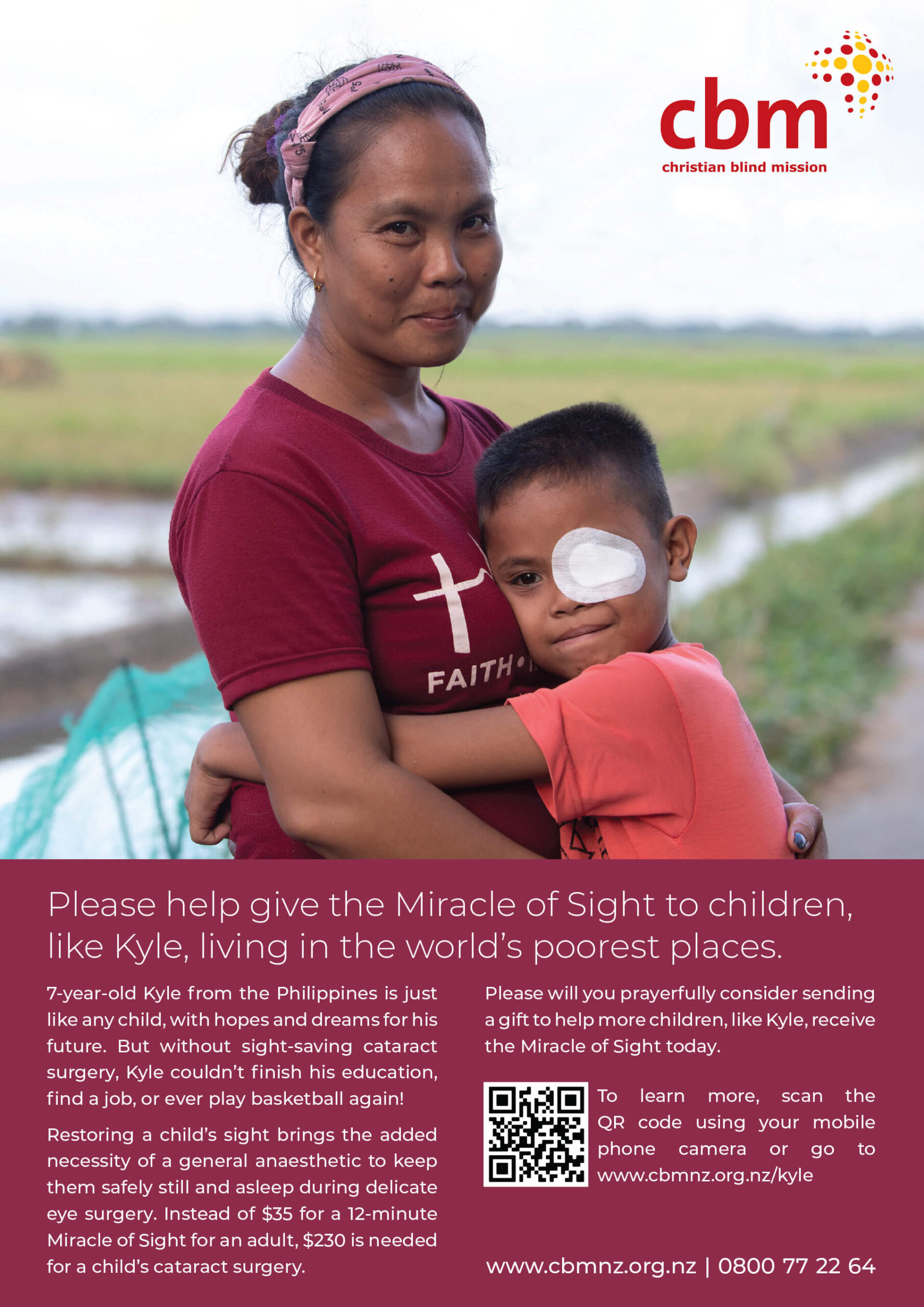
BY SARAH HAY
Sarah is the HR Manager for European Christian Mission in Britain UK. She is responsible for overseeing the mobilisation, recruitment and preparation of new missionaries and short-term volunteers for ECMB and providing HR support for the ECMB office. She also provides member care support to the ECMB missionaries on the field, to enable them to remain effective, fruitful and resilient in their ministry. Outside of ECMB, Sarah is the Course Leader for the MA in Staff Care and Wellbeing at All Nations Christian College. This article is curated with permission from the Lausanne Global Analysis, March 2024.
Member Care Definition
Put simply, the Global Member Care Network (GMCN) defines member care as follows: ‘Member care is the ongoing preparation, equipping and empowering of mission personnel for effective and sustainable life, ministry and work.’[1] Debate about whether the term is good enough to catch the breadth of the practice is ongoing. It is recognized that some mission organizations now use the term ‘staff care’, or even ‘staff care and wellbeing’ rather than member care. An informal survey on the GMCN Facebook group in 2021, which has over 1,000 members, showed that whilst the term ‘member care’ is not ideal, there was no consensus on a preferred choice. Whichever terminology mission organizations choose to use, the key elements are the care and resources provided to a missionary to enable them to thrive.
Self-care Definition
The World Health Organization defines self-care as ‘the ability of individuals, families and communities to promote health, prevent disease, maintain health, and cope with illness and disability with or without the support of a health worker.’ We will look only at the self-care of an individual. It is that which a person does themselves, to enable them to be healthy enough in mind, body, and spirit to perform the functions that are required of them. Ohanian goes further: ‘Self-care ensures that one will thrive and flourish as opposed to merely survive and cope. Self-care is the unseen root system, deep, nourished, expanding, of a strong, resilient, blossoming tree.’[2] This imagery is very helpful in considering that self-care is not an easy fix but requires roots, time, and regular feeding. Having defined the terms, we will now explore the increase in awareness of the importance of self-care seen during and after the COVID pandemic.
Self-care and the Pandemic Legacy
Self-care became a more talked about concept during the recent COVID pandemic. There were many articles about how people could care for themselves and ensure that the lockdowns and bad news from across the globe did not negatively affect their physical and mental health.[3]
The rise of focus on self-care during the pandemic was in part due to the unavailability of the other sources and places where people might usually receive support and care and also extra time freed up by the lack of commute and travel. A study in 2021 found that whilst there was a significant risk of anxiety and depression, 39 percent of the participants either started or increased their self-care and 23 percent invested in self-care for the first time.[4]
Discussion about self-care and self-care practices has, therefore, cemented itself within common parlance. Let us now look at the relationship between self-care and member care.
Member Care Models and the Inclusion of Self-care
There are several models of member care in literature including Dodds and Dodds SPARE-O model[5] and Harry Hoffmann’s Pyramid of Care[6] (developed from Warlow’s Christian Wholeness Framework). However, most of these do not specifically mention self-care and place little emphasis on the actions of the individual, instead emphasizing the care and support offered to individuals by the people and systems around them. Perhaps the most well-known model which does mention self-care is that of Kelly O’Donnell and Dave Pollock as illustrated in this diagram.[7]
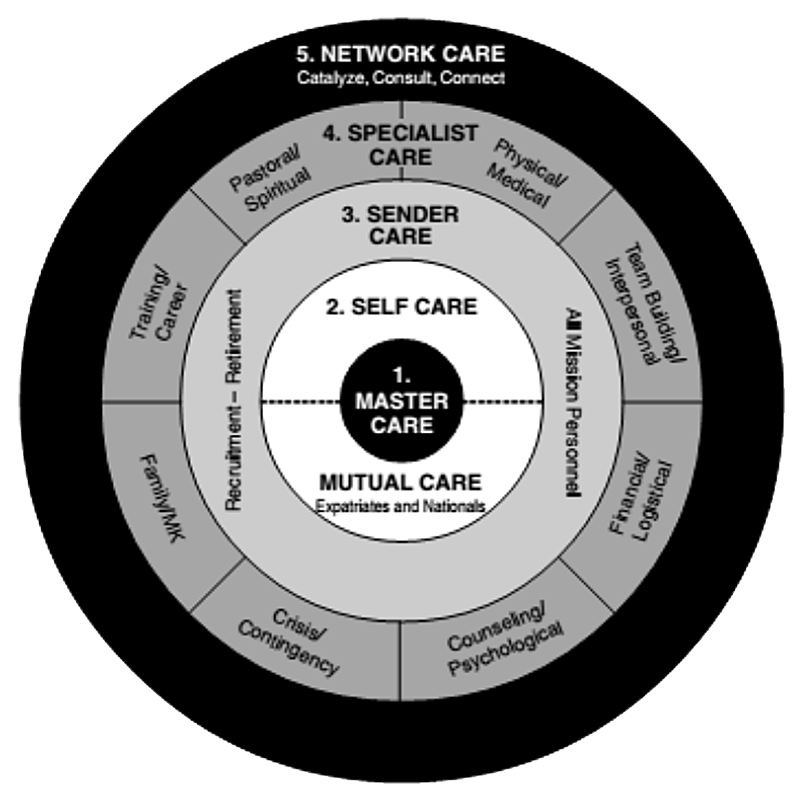
Each of the five spheres are permeable, and care can flow between them. The sources of member care are included, eg senders, such as sending church or mission organization, as are the types of care, eg family and TCKs (Third Culture Kids). At the core of the model is Master Care, in recognition that God is the master, and it is from him that we receive strength. And it is him whom we serve.
The second sphere includes mutual care (from relationships around us) and self-care. Thus, the blending of the two concepts, member care and self-care. Having taught on the topic of member care for several years, I would reflect that one of the weaknesses of this model is that self-care is not a sphere by itself. By joining it with mutual care, it is watered down and not given the attention that it deserves. Rather than encouraging missionaries to take some responsibility for themselves and their own wellbeing, it reinforces a mindset that member care is received. It has a tendency to focus on what others can provide. This leads us to consider why self-care in mission can have a negative response.
Resistance to Self-care
I recently led a retreat and webinars on the topic of self-care. Whilst many were keen to learn about how to improve their own self-care, a number of questions and comments were raised: Isn’t self-care selfish? I’m already too busy; I don’t have time for self-care. Self-care is the opposite of living by faith. We’re called to be living sacrifices, so self-care cannot be biblical.
In Romans 12:1 (NIV) Paul says, ‘Therefore, I urge you, brothers, in view of God’s mercy, to offer your bodies as living sacrifices, holy and pleasing to God—this is your spiritual act of worship.’ These verses are used to argue that rather than showing care to ourselves, we should be offering our lives as a sacrifice to God.
The topic of sacrifice and how missionaries tackle the difficult issues of risk and suffering are well documented[8] and indeed in my teaching on the MA in Member Care and MA in Staff Care and Wellbeing at Redcliffe College and All Nations Christian College, respectively, I have emphasized the need for new missionaries to develop their own theology of suffering and risk before they arrive on the field. The stories and images of Christian martyrs play an important role in Christian mission, but they can also cause a skewed theology of ‘it’s better to burn out than rust out’. Alongside the consideration of risk, we need to recognize that the call to consistently show up in what Eugene Peterson calls ‘a long obedience in the same direction’[9] can be a costly calling.
The Theology of Self-care
Rather than self-care being selfish and a direct opposite of living as a sacrifice, I believe that self-care is an important tool in the missionary tool kit. In John 7:37, Jesus invites those who are thirsty to come to him and drink. This is not passive but requires action on behalf of the one with thirst. In John 1, there is another invitation as Jesus calls the disciples to ‘come’ so that they could see. Perhaps the most beloved of verses for the member care practitioner is Matthew 11:28-30 (MSG): ‘Are you tired? Worn out? Burned out on religion? Come to me. Get away with me and you’ll recover your life. I’ll show you how to take a real rest. Walk with me and work with me—watch how I do it. Learn the unforced rhythms of grace. . . . I won’t lay anything heavy or ill-fitting on you. Keep company with me and you’ll learn to live freely and lightly.’ This, to me, is an invitation to care for oneself by coming to God. A more obvious biblical example of self-care would be Jesus himself, who gave himself time and encouraged his disciples to rest and pray in the midst of a life of self-sacrifice (Matt 14:13; Mark 6:30-32). As Ohanian says, ‘Self-care is neither selfish nor egotistical, but a wise preventative and self-respecting practice for anyone who desires to remain in their role of care and service.’[10]
The Synergy of Member Care and Self-care
Far too often in the mission world, I believe that we mistake burnout as the height of service to God. We see burnout as a badge of honour. However, effective service cannot be done by a burnt out, shrivelled body, mind, or soul. We should put our efforts into helping a missionary serve well and serve faithfully, without serving until they can serve no more due to burnout. There is a road back from burnout to service, but it can be long and difficult, and it is far better to prevent burnout than repair it.
Member care is multi-faceted, and there are many preventative and curative ways in which a member care practitioner can support the missionaries they are responsible for. An essential preventative tool we must recommend is that they practice self-care. This should be non-negotiable.
How can we facilitate self-care in others? There are spiritual, physical, emotional, cognitive/creative, and social/systemic aspects which we can encourage.[11] Examples are numerous and varied. Taking the physical aspect, we could encourage attention to sufficient and good sleep, eating more healthily, exercising a little more, and talking to a doctor if stress symptoms are evident, for example. The new field of environmental neuroscience is already proving that exposure to nature is essential for our brains.[12] Green (vegetated) and blue (moving water) environments can be associated with a reduction in stress, but now it seems that exposure to the great outdoors benefits cognitive function too. Nature activates our ‘resting’ state which then encourages calm and wellbeing. Fractal patterns (naturally occurring patterns such as leaves on a succulent plant or a snowflake) are also known to help our brains. So simply encouraging a missionary to take a short walk outside in nature[13] would be an excellent way to assist them in their self-care.
Conclusion
The widespread engagement with self-care during the pandemic has highlighted the power and potential of personal responsibility for wellbeing. Member care practitioners can harness this learning by revisiting the balance between personal responsibility and external intervention in missionary care. It requires a theological as well as a sociological and practical element to recognize that meaningful self-care is not a selfish practice, but an essential part of a missionary’s tool kit and one which the member care practitioner should encourage.
Footnotes
- The Global Member Care Network Member Care Definition, accessed 1 December 2023, https://globalmembercare.com/definitions
- Self-care Interventions for Health, World Health Organization, accessed 29 November 2023, https://www.who.int/health-topics/self-care#tab=tab_1
- Nairy Ohanian, Self-Care, unpublished paper, accessed 1 December 2023, https://drive.google.com/drive/folders/0BxkNxNdI_KSdZE1EOHRhdVhia0k.
- Self-care Tips During the COVID-19 Pandemic, Mayo Clinic Health System, 7 April 2020, https://www.mayoclinichealthsystem.org/hometown-health/speaking-of-health/self-care-tips-during-the covid-19-pandemic.
- Amelia Fiske et al., Impact of COVID-19 on Patient Health and Self-care Practices: a Mixed-Methods Survey with German Patients, BMJ Open, Vol. 11 Issue 9, 2021, https://bmjopen.bmj.com/content/11/9/e051167.
- Lois Dodds & Lawrence Dodds, Selection, Training, Member Care and Professional Ethics: Choosing the Right People and Caring for Them with Integrity ( Liverpool, PA: Heartstream Resources, 1997).
- Harry Hoffmann, ‘Connecting and Resourcing Member Care Practitioners Worldwide: The Global Member Care Network’, Evangelical Missions Quarterly, 56(1), 2020.
- Kelly O’Donnell, ed., Doing Member Care Well: Perspectives and Practices From Around the World (Pasadena:William Carey Library, 2002), https://www.worldevangelicals.org/resources/view.htm?id=61.
- Anna E. Hampton, Facing Danger: A Guide Through Risk (New Prague MN: Zendagi Press, 2016). Charles A. Schaeffer and Frauke C. Schaeffer, Trauma and Resilience, A Handbook (Chapel Hill, NC: Frauke C. Schaefer, MD, Inc: 2016).
- Eugene Peterson, A Long Obedience in the Same Direction (US: Inter-Varsity Press, 2000).
- Ohanian, Self-Care, accessed 1 December 2023, https://drive.google.com/drive/folders/0BxkNxNdI_KSdZE1EOHRhdVhia0k.
- See the SPECS model outlined by Hawker and Horsfall in Tony Horsfall and Debbie Hawker, Resilience in Life and Faith: Finding your Strength in God (Abingdon: The Bible Reading Fellowship, 2019).
- Sam Pyrah, The Nature Cure: How Time Outdoors Transforms Our Memory, Imagination and Logic, The Guardian, 27 November 2023, https://www.theguardian.com/lifeandstyle/2023/nov/27/the-nature-cure-how time-outdoors-transforms-our-memory-imagination-and-logic.
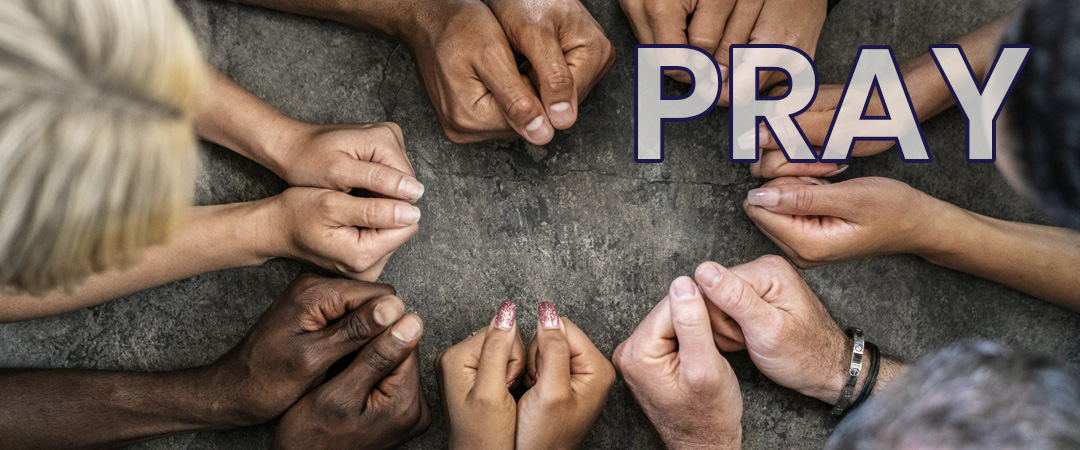
PRAYERLINKS
PRAYER FUEL FOR MISSIONS
Please pray for the Haitian Bible Society. Head, Magda, reported back in March that its offices are in a lawless part of the city where every morning the streets are full of dead bodies. “It is total chaos; the destruction of human lives, private property and state property is unspeakable,” she says. Two of her staff have been directly impacted after their neighbourhood was attacked by gangs and they had to leave their homes in a hurry. Pray for protection for the staff, and their families, and for the Bible distribution work they are carrying out. Pray for the violence in Haiti to subside.
FEBC International leaders are gathering in Seoul, South Korea during April for the FEBC International Council Conference. Please pray for unity, understanding, and wisdom as they strategize and plan for the season ahead. May God be in their midst. (Col 3:15-17)
Praise God for the refreshing annual leave break our employed staff Jay and Pauline had during March. While recent stakeholders meetings generated some great conversation, the MI Council is planning to continue work on reviewing our purpose and evaluating our core functions. Pray for the Council and available MI members when they meet in little while to agree on some action steps to bettter align the kind of services we provide for members to the current felt needs of our community.
We praise God for the recent visit of the General Director of OMF International, and for the many opportunities to share about the work of the mission. This month we farewell a colleague to a new role as Assistant to the General Director, based in Singapore, and another staff member leaving us to take up an exciting job opportunity that has lots of potential to impact the next generation. Pray for both of them as they adjust to their new roles. Pray too as we fill the gaps they leave in our NZ team.
Please pray for more opportunities to share SIM New Zealand’s vision with local churches and get their help in mobilising New Zealand Christians for mission—pray for creativity and energy.
On Tuesday, 9 April, a group of MI members will be meeting online to talk about how we can work together to serve alongside New Zealand churches in cross-cultural ministry to encourage immigrants, former refugees, international students and their families into flourishing and contributing communities. Pray for the Lord’s direction and guidance as we meet together, so that we can be blessings to the nations coming to and dwelling in Aotearoa New Zealand.
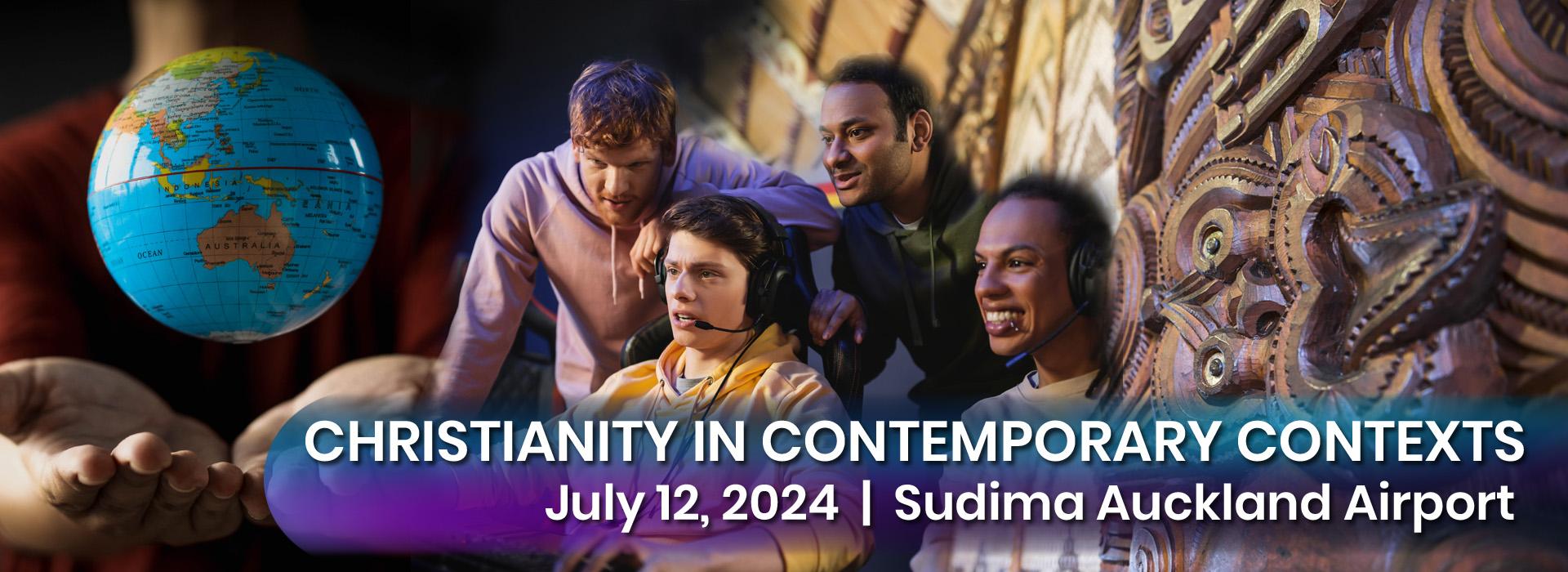
A MISSIONS INTERLINK DISCUSSION FORUM
Friday 12 July, 2024 | Sudima Auckland Airport Hotel
Costs: MI Members $220 | Non-Members $280 | Students & Retirees $150
Includes lunch and refreshments.
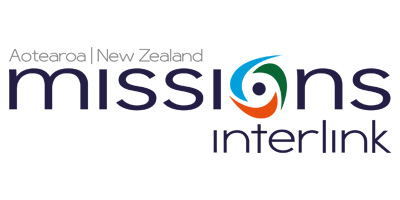
This discussion forum is for anyone interested in propagating the gospel in different contexts, whether that is around the world or within your neighbourhood. It will be of special interest to missions and church leaders, church planters, and those working interculturally as witnesses within their sphere of influence (community, workplace, school, clubs, etc.)
It is right to lament the decline in church attendance in Aotearoa New Zealand and the loss of influence in society, but in doing so we must not lose sight of the great opportunities that changes in Western nations provide for the gospel and church growth. While investment in traditional expressions of Christianity seem to be having diminishing returns, we can draw inspiration from other parts of the world where Christianity continues to flourish. The key is to understand how to better contextualise the gospel and our expressions of faith in Christ for our current contexts, rather than remain committed to forms that worked generations ago.
At this forum three contributors will update us with what is happening with faith in Jesus in their contexts and inspire us with possibilities. We will start with a big picture look at the state of Christianity around the world, look at the way our faith is emerging in local indigenous contexts, and step into the metaverse to see a context of billions accessible at the click of a button. Come join us and expand your ministry vision!
Dr Gina Zurlo
Global Contexts
Gina is a world renown Christian demographer and historian who holds a PhD in History and Hermeneutics from Boston University School of Theology (2017). She is an interdisciplinary scholar, crossing between history, sociology, and World Christianity with particular interest in women’s experiences of Christianity and church life worldwide.
She is the Co-Director of the Center for the Study of Global Christianity at Gordon-Conwell Theological Seminary (South Hamilton, Massachusetts) and Visiting Research Fellow at Boston University’s Institute on Culture, Religion and World Affairs.
Gina was named one of the BBC’s 100 most influential and inspiring women of 2019 for her work in studying religious statistics, and, in particular, the future of religion worldwide.
Gina will share findings from her research into the growth of Christianity around the world. These findings are sure to surprise and encourage you!
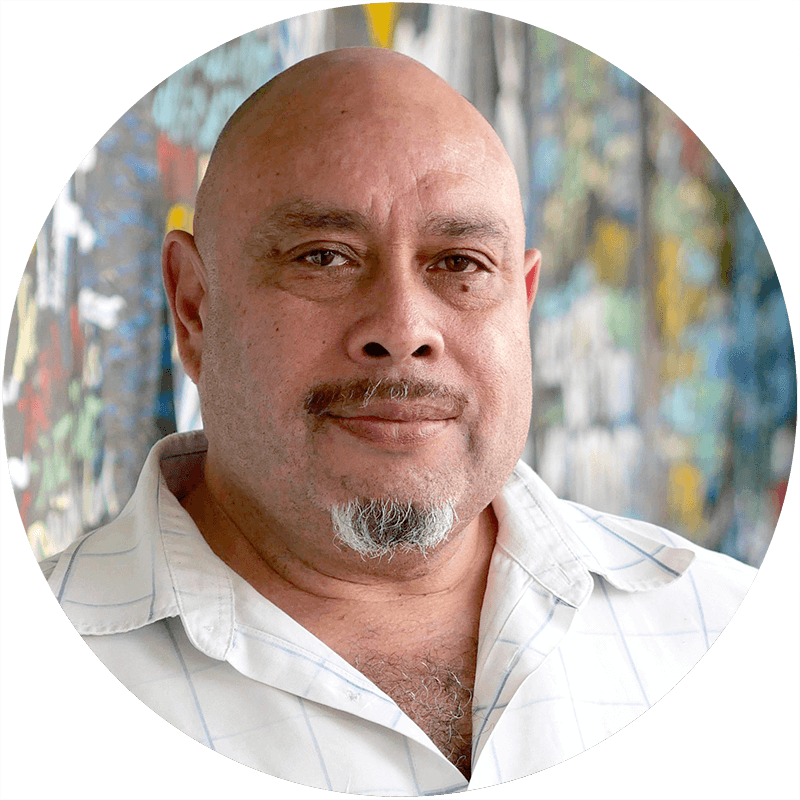
Brad Haami
INDIGENOUS CONTEXTS
Brad is the current chair of Te Rūnanga o te Wānanga Amorangi—The Māori Council for Laidlaw College—and sits on the governing board of the college. He is a lecturer in biculturalism at Laidlaw and holds a Graduate Diploma in Indigenous Theology. He is an accomplished Māori author, journalist and lecturer with added experience in film and television media. He has produced exploratory works on mātauranga Māori (Māori knowledge), Māori history and more recently Māori biography. He was recently the Māori curator/expert on the acclaimed Te Taiao / Nature exhibition at Te Papa Tongarewa Museum. His interest in storytelling is primarily based on the ‘power of the narrative’. Whether in an oral, written, documentary or cinematic form, it has the capacity to convey a message that stimulates conversation and transforms hearts, minds and communities.
Brad will share with us from an insider’s perspective about the reality of living as a follower of Jesus in highly spiritually aware indigenous contexts.
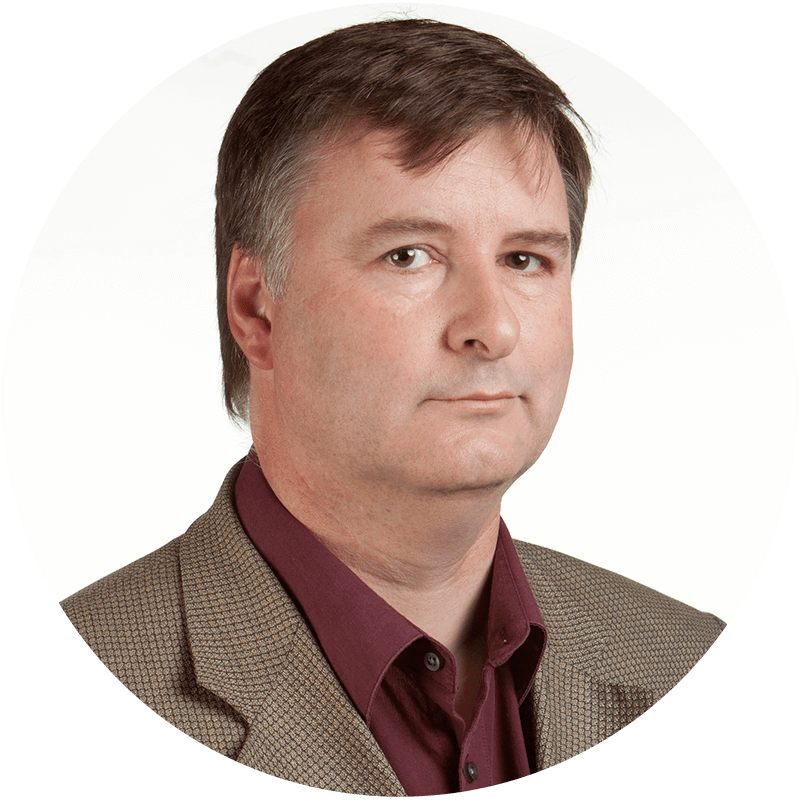
Dr Stephen Garner
DIGITAL CONTEXTS
Stephen is a Senior Research Fellow at both Laidlaw College and the Australian College of Theology. His specialty is theology in dialogue with science, technology and new media, as well religion, media and popular culture. One of his current research projects is investigating video games and spiritual formation. His other research interests include: media and religion, spirituality, public theology, religion and popular culture, and ethics, and transhumanism. As well as being a theologian, Stephen has an academic and commercial background in Computer Science. His most recent book (co-authored with Heidi Campbell) is Networked Theology: Negotiating Faith in Digital Culture (2016).
Stephen will explore with us opportunities for sharing Jesus and contributing to spiritual development within the digital realms that are already hugely populated spaces with little intentional gospel witness.
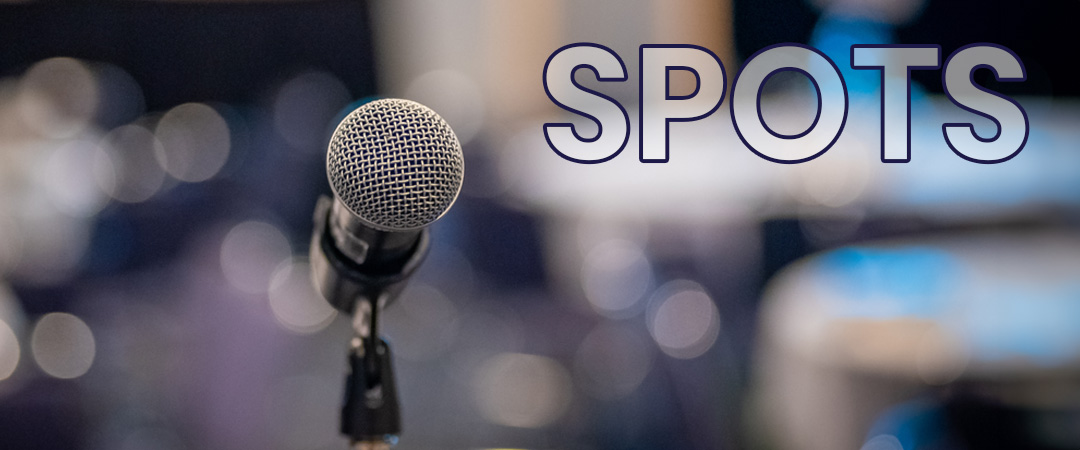
SPOTLIGHT ANNOUNCEMENTS
LATEST NOTICES & EVENTS
REMEMBERING KEN ROUT
Tuesday 9 April 2024 would have been Ken Rout’s 82nd birthday. Sadly he passed away after a long-term illness on 9 March 2024. Many from the Missions Interlink community will remember Ken as a dear friend, tirelessly enthusiastic about missions and especially indigenous missionary work in Africa, first with Sowers International and then through his ministry Harvest Partnership, which began by helping genocide refugees from the East African Great Lakes prepare to return home as church planters. It was decided that to make the work sustainable for local churches they would be trained to start and multiply house churches to saturate their area and disciple new believers. This work began in East Congo, Rwanda and Burundi with Kenya and Uganda added. Local leaders have become the teachers and encouragers of other leaders. Their churches are being transformed and pew-sitters are becoming active disciples through a three-step CPM (Church Planting Ministry) training programme, which was further refined over time.
Ken is well remembered for almost 60 years of pioneering development and support of indigenous misssions and jovial participation in the missions community of Aotearoa New Zealand.
LEARN ABOUT MISSIONS
Bridge Mission happens again on 29 April, 2024. This is a chance for those considering mission to explore what that might look like, what is involved, and what they can do to prepare. For more details, check out the events page here: https://omf.org/nz/get-involved/events/.
REGEN24 GOSPEL VISION CONFERENCE
The gospel changes everything. The reason the gospel changes everything is that it is the gospel alone—the great victory of the grace of God in the cross of Christ—that can truly change hearts, whether the heart in discipleship, the heart of leadership, or a heart for mission. Church members and leaders are invited to come to Regen24, to take a deep dive into a gospel vision for discipleship, leadership, and mission.
Date:
Wednesday 8—Friday 10 May, 2024
Venue:
St Margaret’s Anglican Church
102 Hillsborough Road, Hillsborough
AUCKLAND
MORE INFO. Find out more and register now at Eventbrite.
NEW LEADER FOR MMMNZ
The Board of Mobile Mission Maintenance New Zealand is pleased to announce that Steven Senn has been appointed as the new Director of MMMNZ. He will succeed Howard Robinson who is standing down after 11 years in the role.
Steven is a member of the C3 Church North City (Rototuna, Hamilton). He brings strong organisational, interpersonal and communication skills to the team coming from the business and marketing sector but also involved in a not for profit organisation over the last few years.
Steven has begun a period of partnership development to raise financial and prayer support to enable him to serve, and once he has raised his support there will be a period of transition and handover.
Please keep both Steven and Howard in your prayers as they face these significant life changes.
NZ TURKEY NETWORK NATIONAL CONFERENCE
Save the date!
The NZ Turkey Network National Conference 2024 is coming to Christchurch!
Date:
Friday 26—Saturday 27 July, 2024
Venue:
To Be Confirmed
CHRISTCHURCH
MORE INFO. Keep updated at https://www.nztn.org.
RESOURCE RAISING & SPIRITUAL DEVELOPMENT SUPPORT AVAILABLE
Heading into 2024 Jenny Caston is delighted to offer her services to our Kiwi missions community. She has two main thrusts:
- Helping charitable organisations with their philanthropic aspirations and fundraising endeavours: https://www.willpower.org.nz/ and,
- Accompanying others on their sacred journeys as Supervisor or Spiritual Director: https://www.soulcare.nz/.
2024 MI AUSTRALIA NATIONAL CONFERENCE
The 2024 Missions Interlink Australia National Conference is approaching again with the theme; “Embracing the New Landscape.” MI Aus invites you to join them for this mission-focused, professional event designed for Australian (and New Zealand) missions leaders who play a crucial role in shaping the future of global missions and training the next generation of missions workers.
Save The Dates: 25-26 July, 2024
Location: MELBOURNE (TBC)
Watch this space for future registration information.
SOUTH PACIFIC MEMBER CARE NETWORK 2024 CONFERENCE
The SPMC Network conference provides an opportunity for professional development and networking with others, sharing your passion to care for those working in cross cultural situations. The speaker is Tony Horsfall from the UK. Tony has been involved in local church leadership for over 30 years. He regularly travels to Singapore and Malaysia to share the message of grace and intimacy with missionaries and church leaders.
Location:
Pallotti college
80 McNamaras Rd
Westburn, VIC 3799
AUSTRALIA
Dates:
From: 29 April 2024 from 2pm
To: 3 May 2024 after lunch.
For more information including pricing click here to visit the MI Australia event page.
GLOBAL MEMBER CARE NETWORK 2024 CONFERENCE
The Global Member Care Network is working on their vision to bring the Global Member Care world together again for their 4th Global Member Care Conference, this time in Africa. The significance of this location is to serve African mission movements, while learning from their unique strength in missions and member care. Past experiences have shown that surprising connections and transformative insights happen individually, organizationally, and nationally when member care practitioners gather from various national missions movements all over the world.
Location: Nairobi, Kenya
Dates: 28 Oct – 1 Nov 2024
For more information visit: https://globalmembercare.com/conference-2024/
ABOUT US
Executive Officer Jay Mātenga
Administrator Pauline Wood
Executive Team
Joseph Bateson (Chair), Glenn Carter (Vice Chair), Jon Horne (Treasurer), Andrew Marriott (Secretary), Rebecca De Jong.
MI Council
Arotahi (formerly NZBMS), Asian Outreach, Beacon Partnerships (formerly LeaDev-Langham), Church Mobilization Trust, Eastwest College, European Christian Mission, GC3, International Teams, Interserve, Laidlaw College, MotiVate, NZCMS, OMF, Pioneers, SIM, WEC, World Vision, with individual member: Jon Horne.
Our Purpose
We facilitate collaboration towards participation in mission from and within Aotearoa New Zealand. We nurture the missions community in Aotearoa New Zealand to connect, converse, and conduct mission with the aim of working together: on mission.
Connecting the missions community
from and within Aotearoa NZ
for God’s glory everywhere, always.
MI SERVICES include (but are not limited to):
MI BULLETIN MI Online Member Directory
MI ManaakiApp (for retail discounts & coupons)
MI Research and Resources
MI Conferences, Clusters & Collaborations:
Admin, Mission Leaders, Church Mission, Diaspora,
Member Care, Mission Training, Mobilisation, & more.
HOW TO CONTACT US
PO Box 64 379
Botany 2163
Auckland, New Zealand
+64 9 320 4408
CLICK HERE to drop us a note.
ADVERTISING
The MI BULLETIN is distributed by email every month to around 1000 missions interested people.
Commercial Rates & Sponsorship
Only charity rates are listed here. Commercial ad rates and sponsor benefits are set by negotiation.
Spotlight Notices
Text only (up to 50 words with one web link).
MI members — FREE
Non members — $40 per spotlight
BULLETIN Full Colour Ad Space
Artwork must be supplied (.jpg or .pdf, 300dpi)
Deadline: Last Friday of the month before issue.
COST: MI MEMBERS
First Month
A4 Portrait—$150
A5 Landscape—$110
Successive Months
A4 Portrait—$100
A5 Landscape—$80
Non-members, double the member rate.
